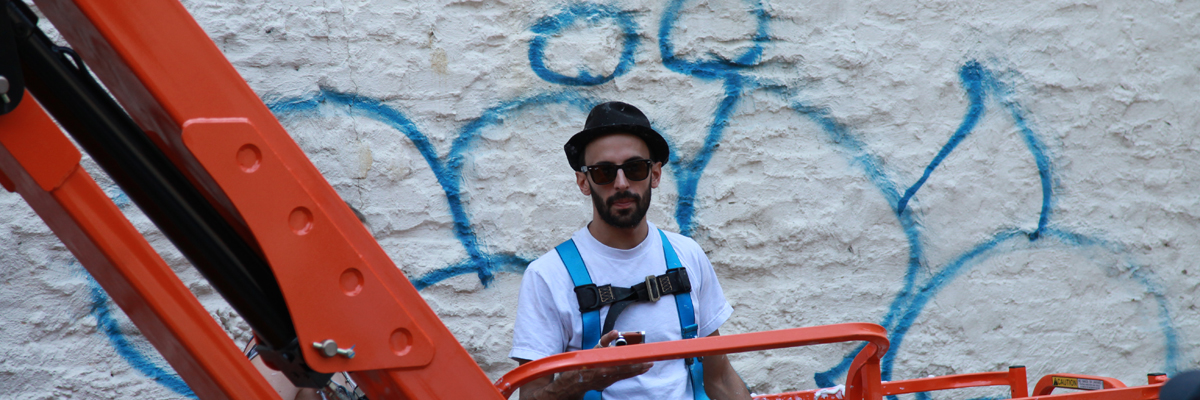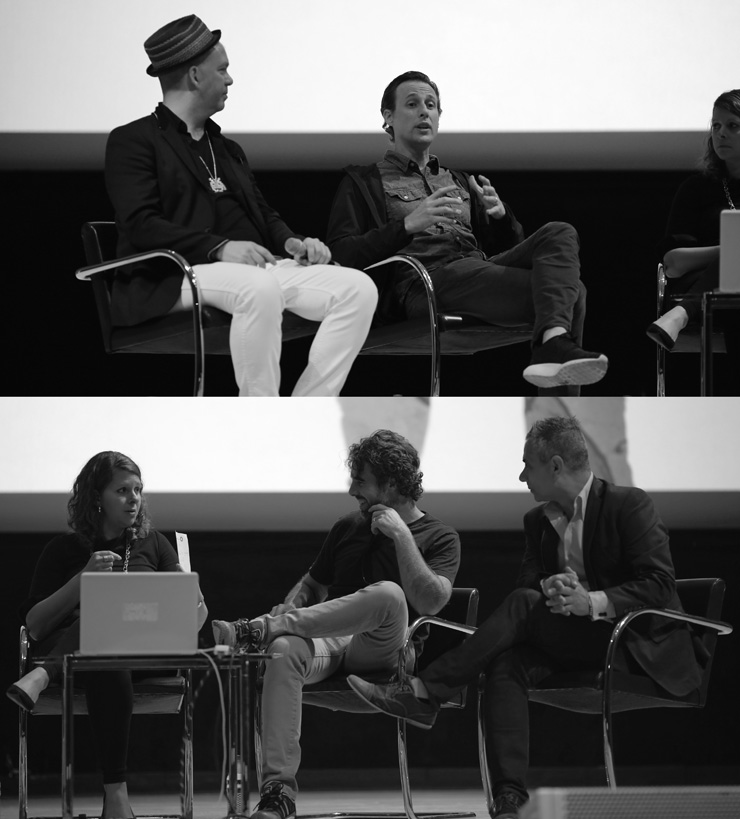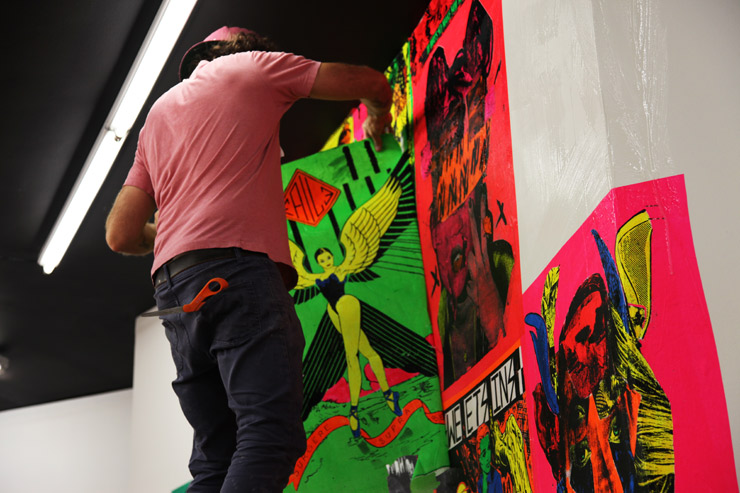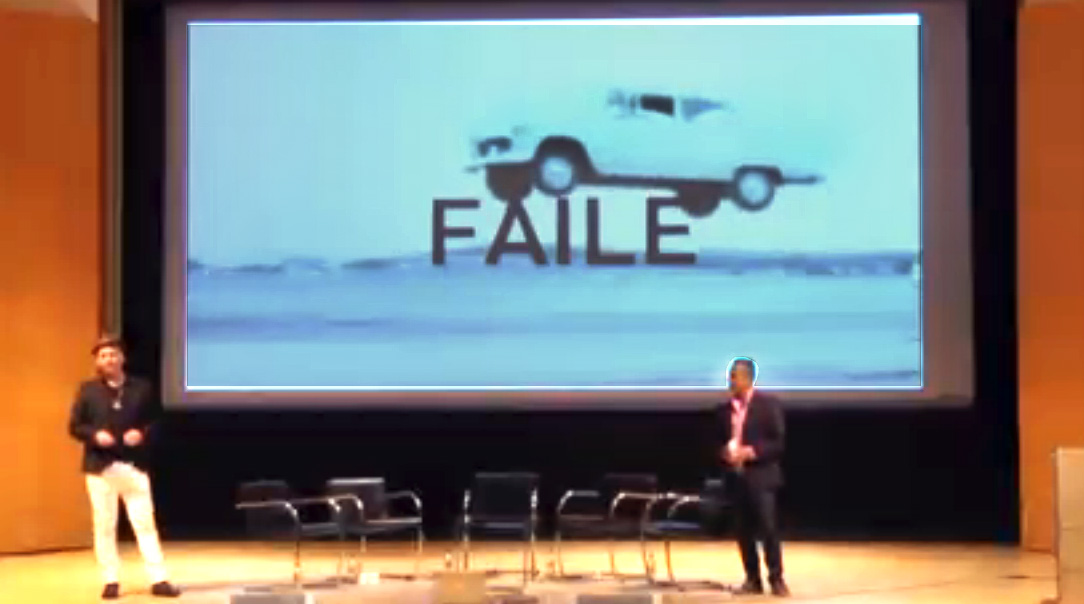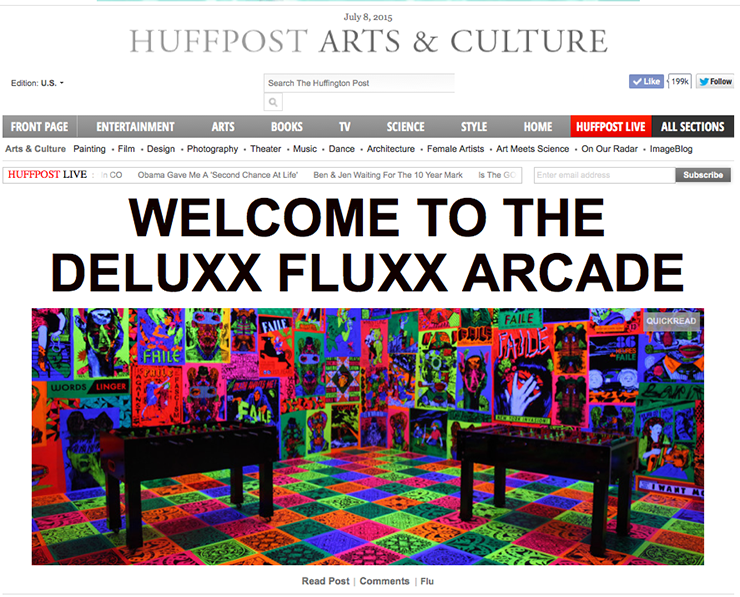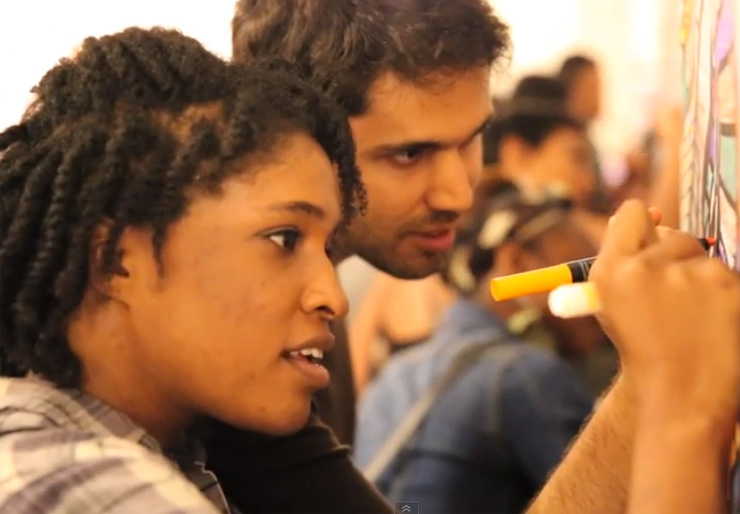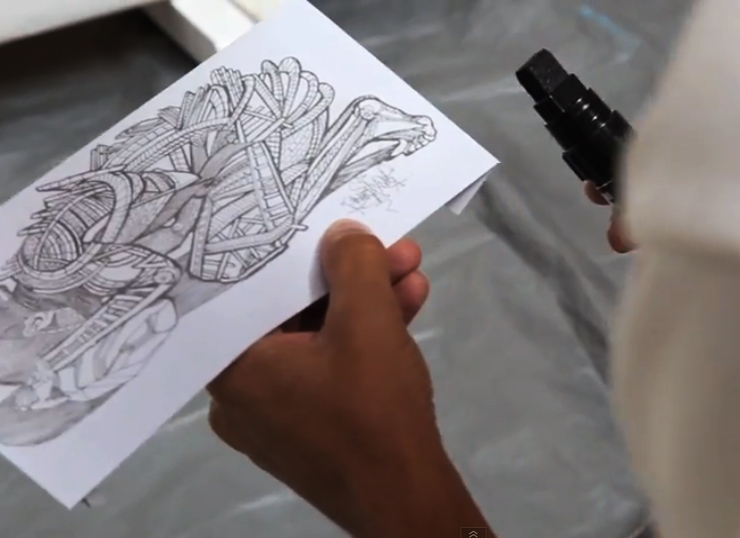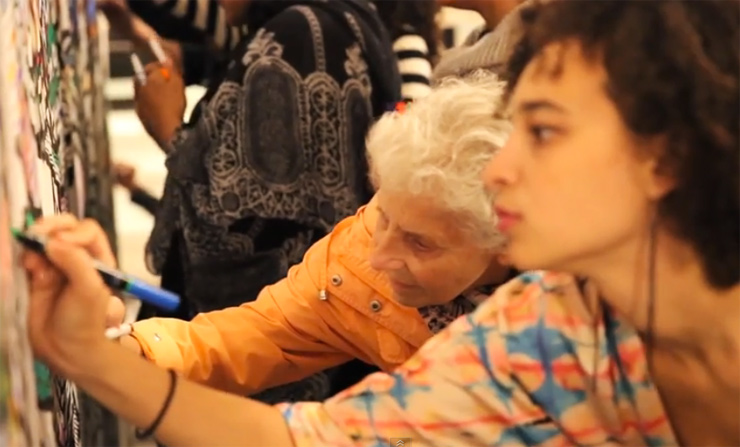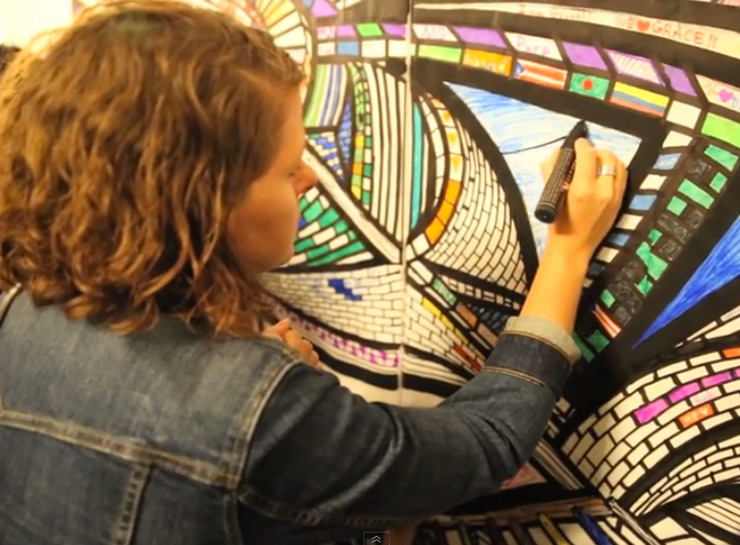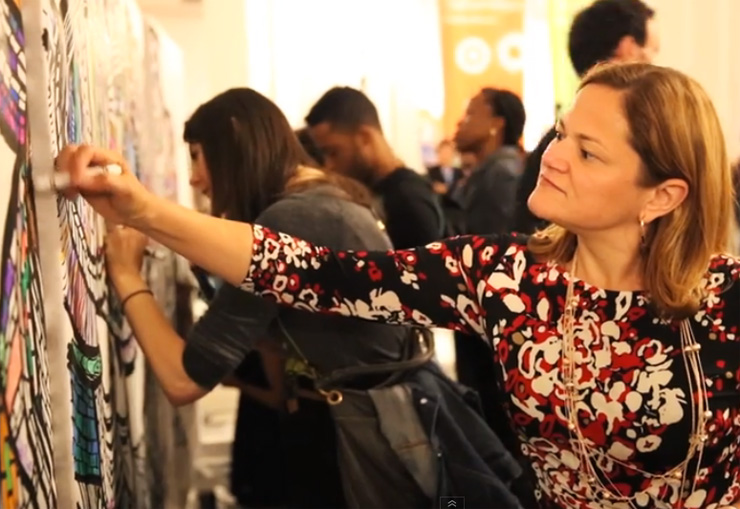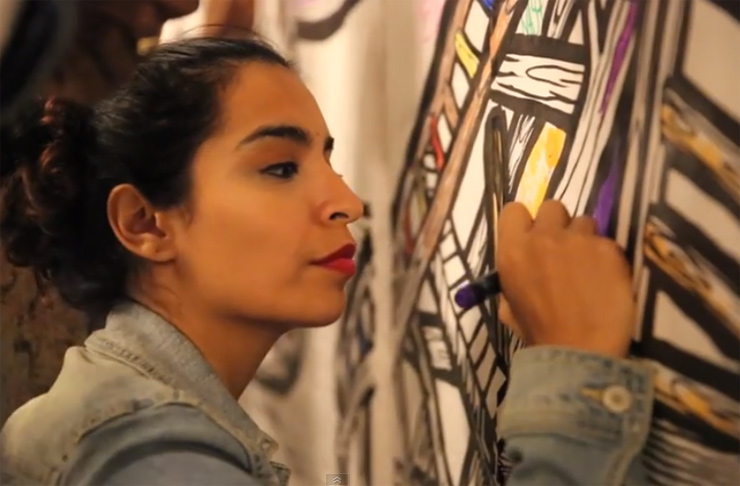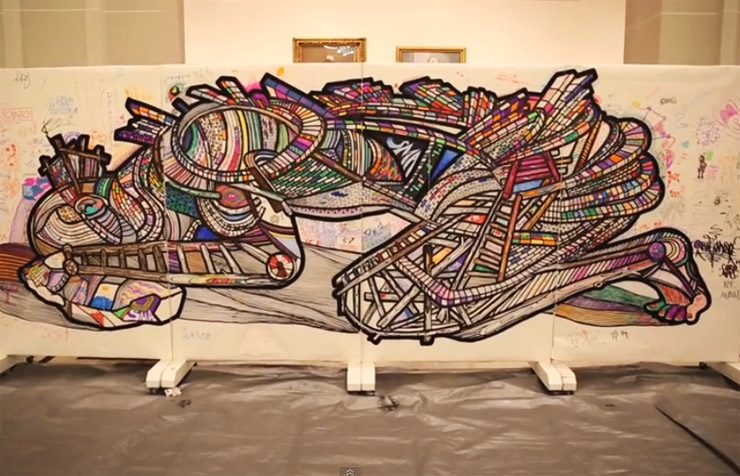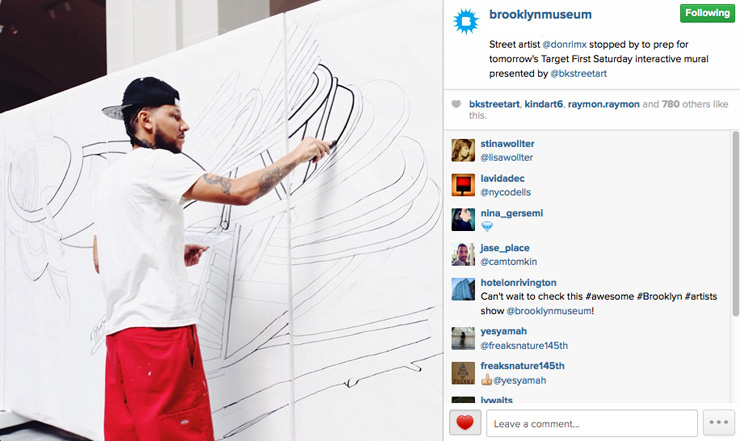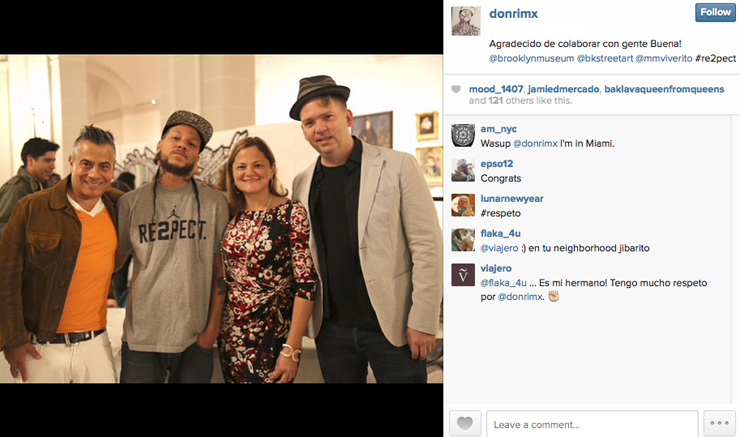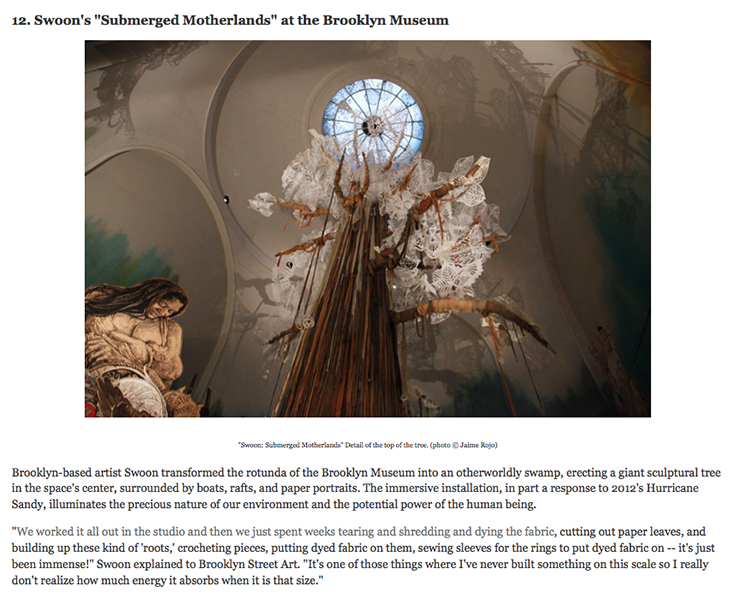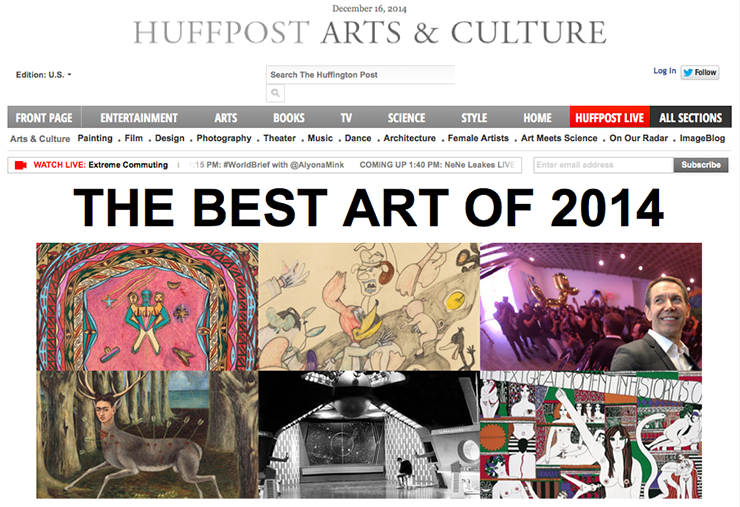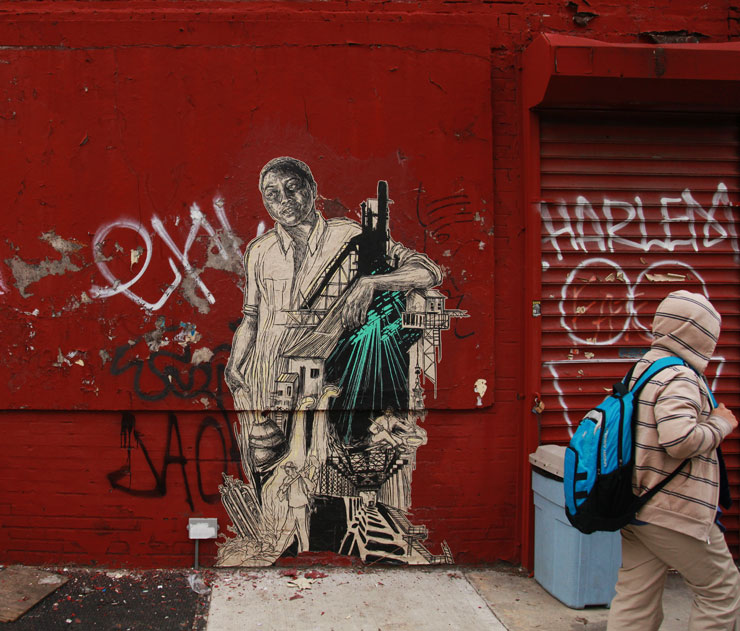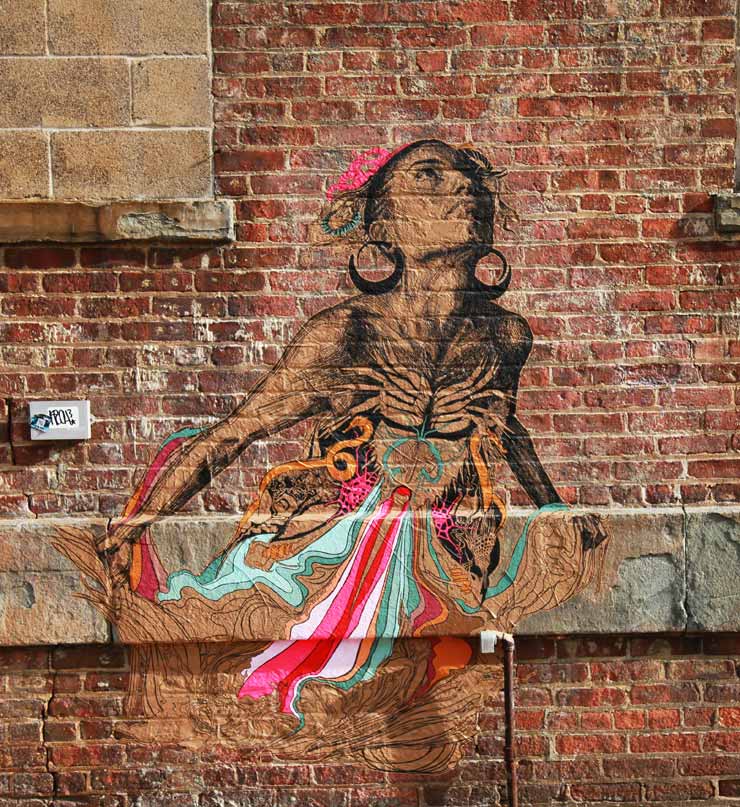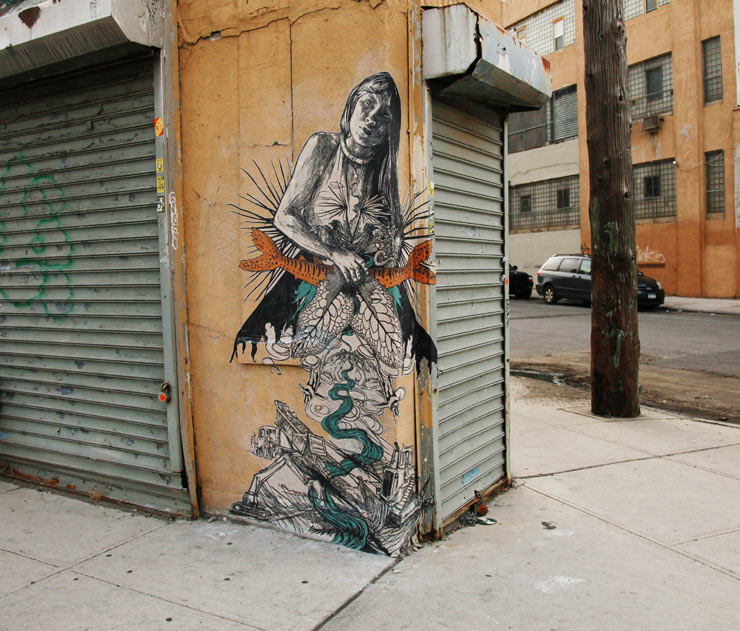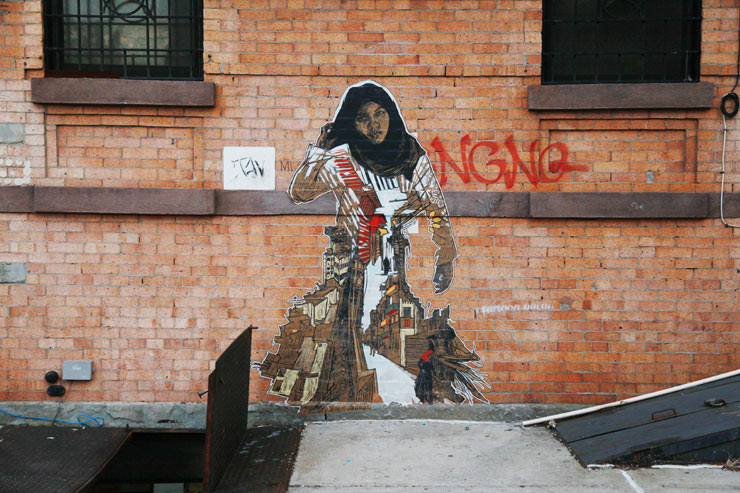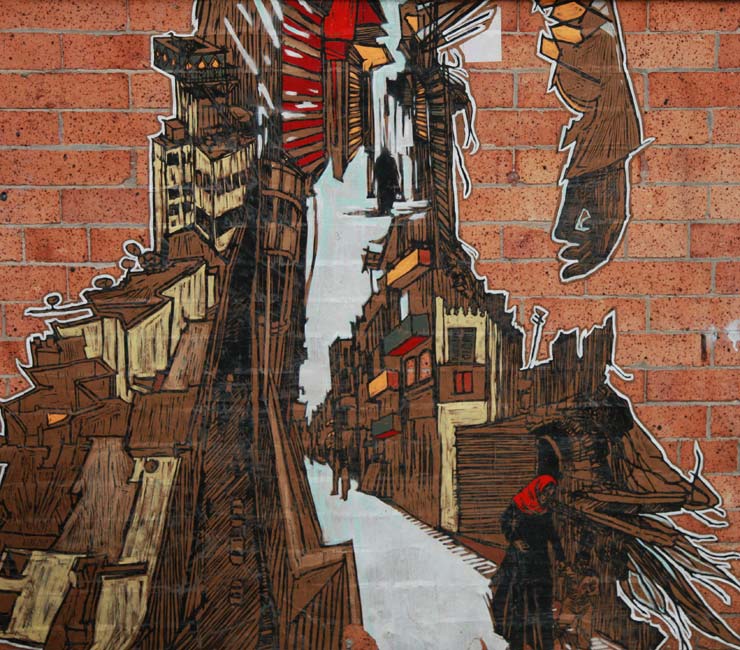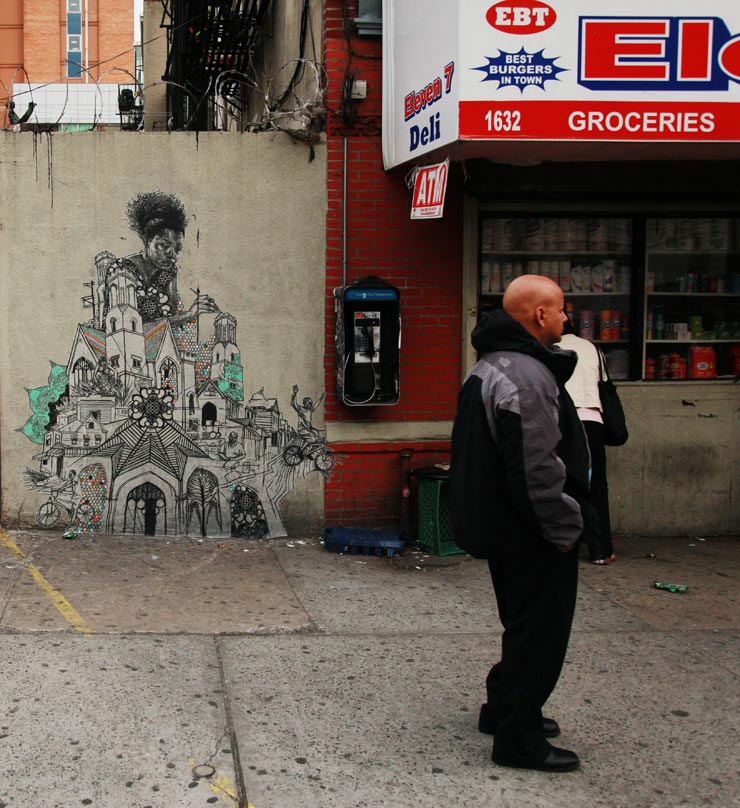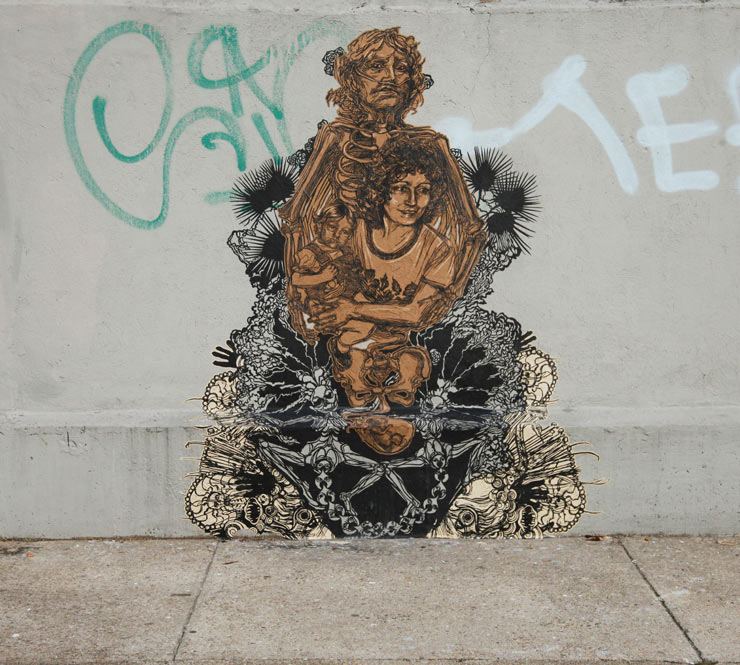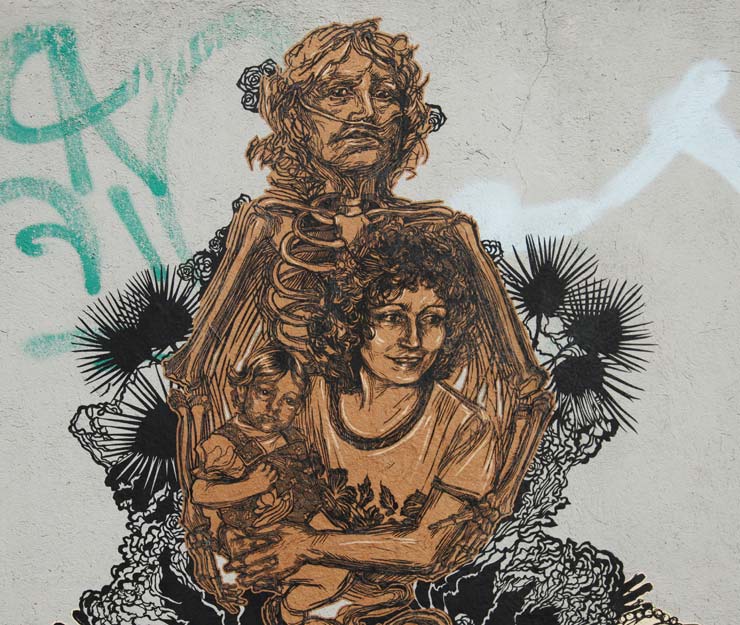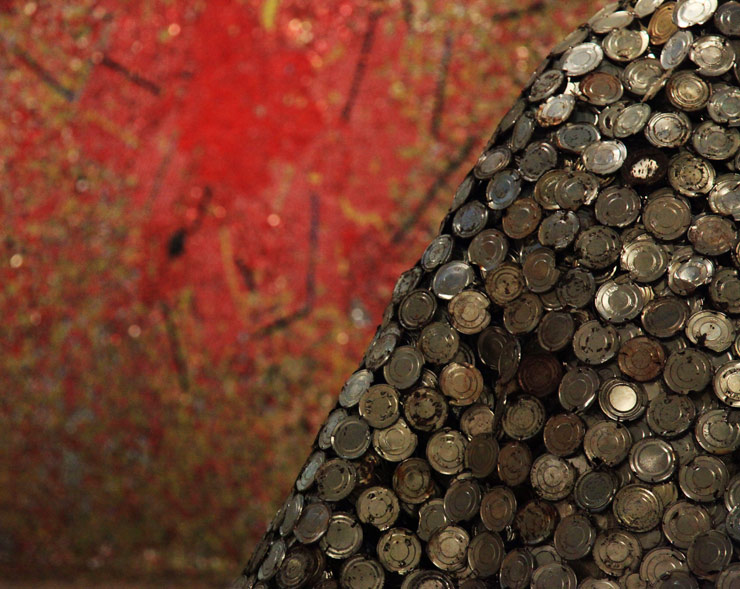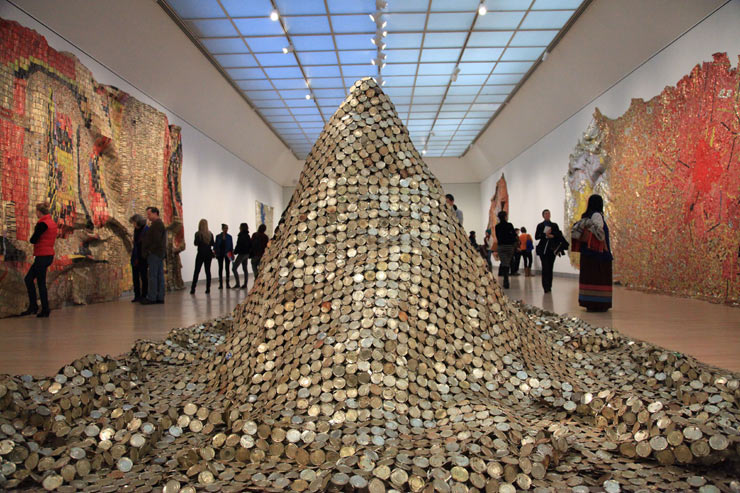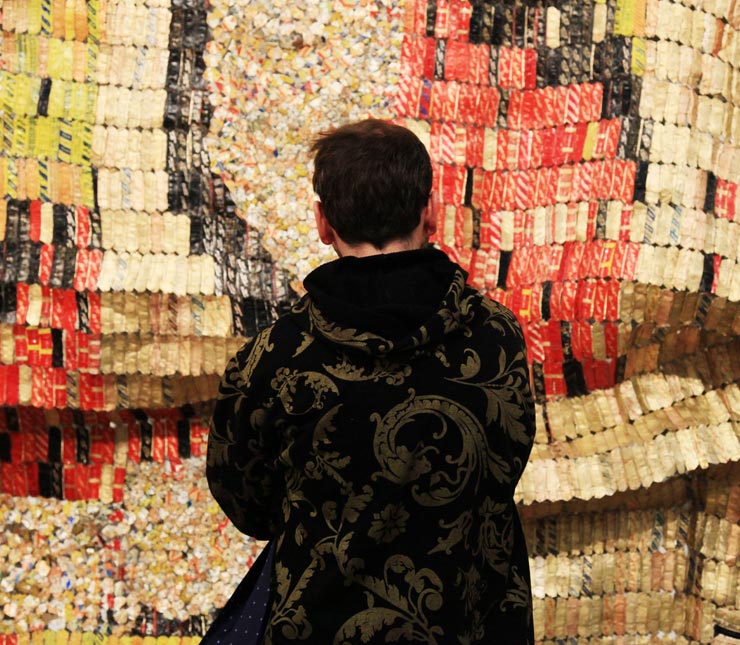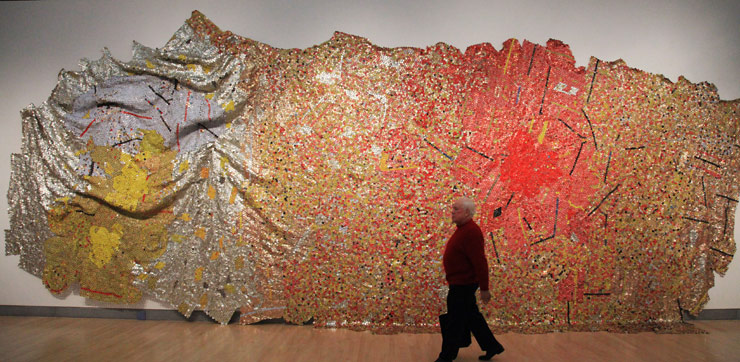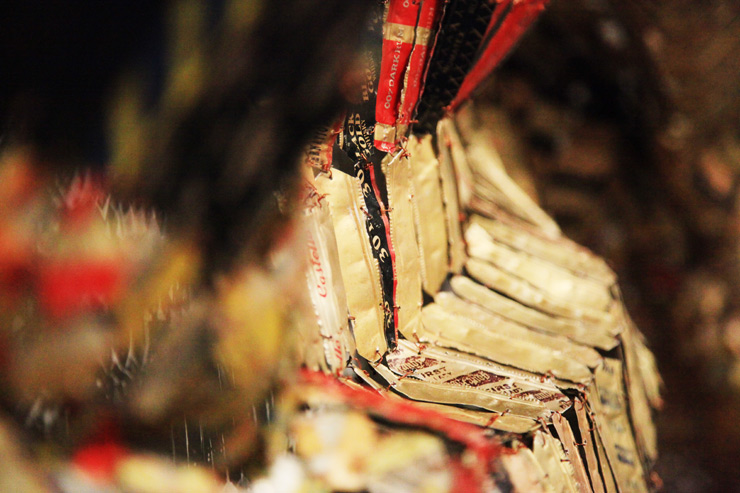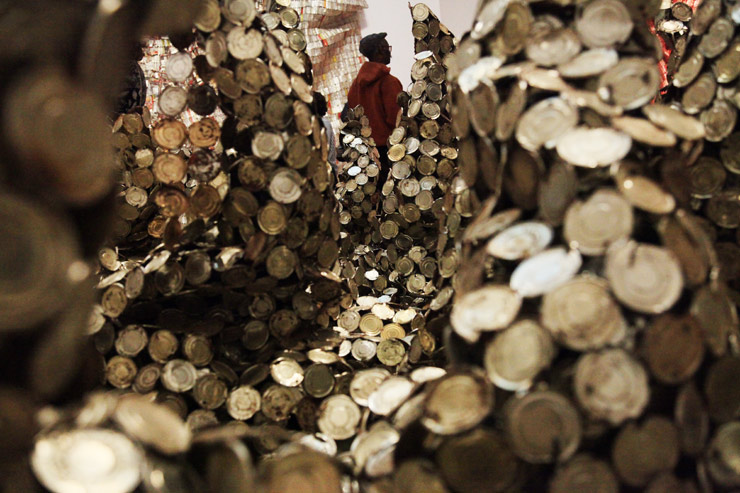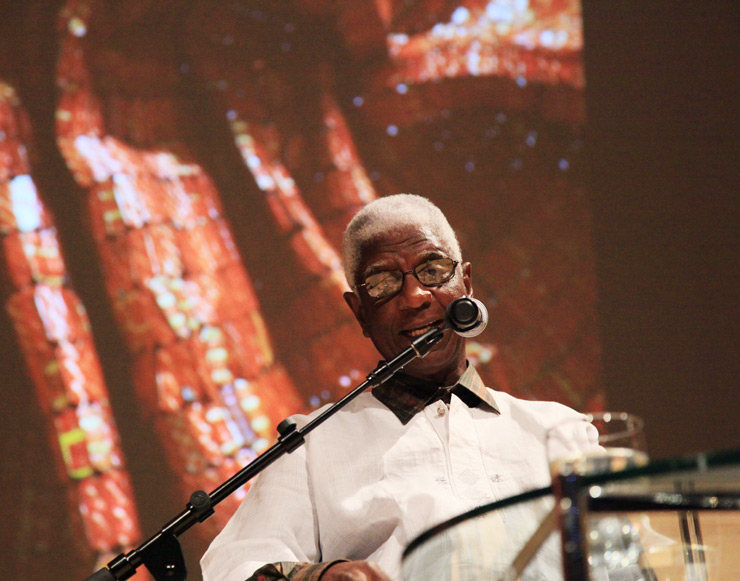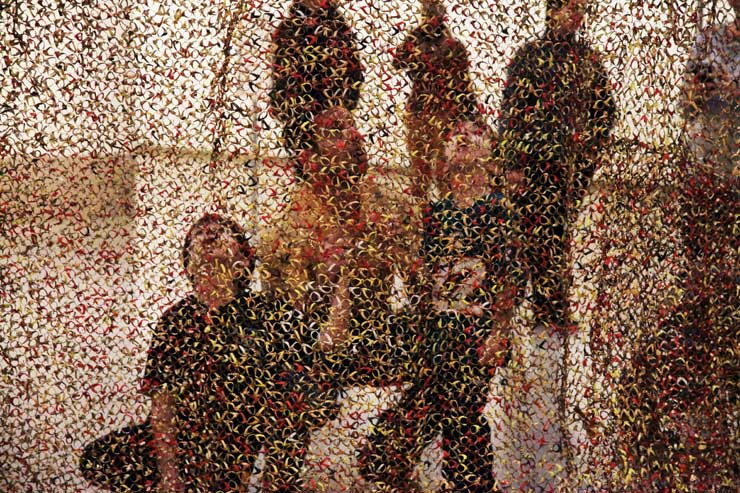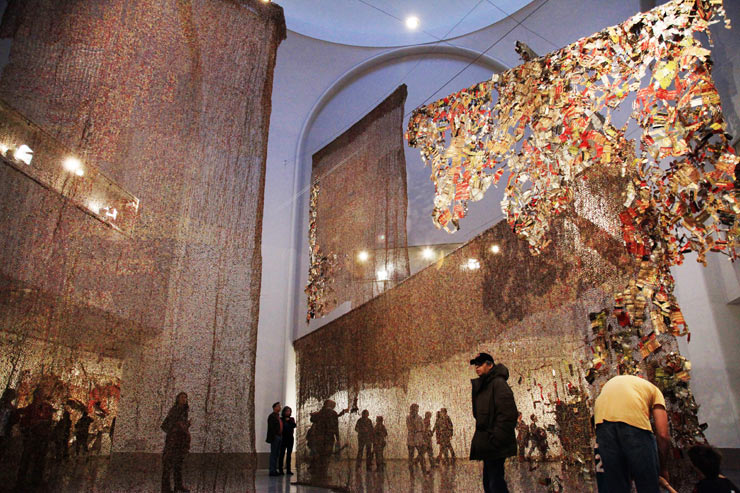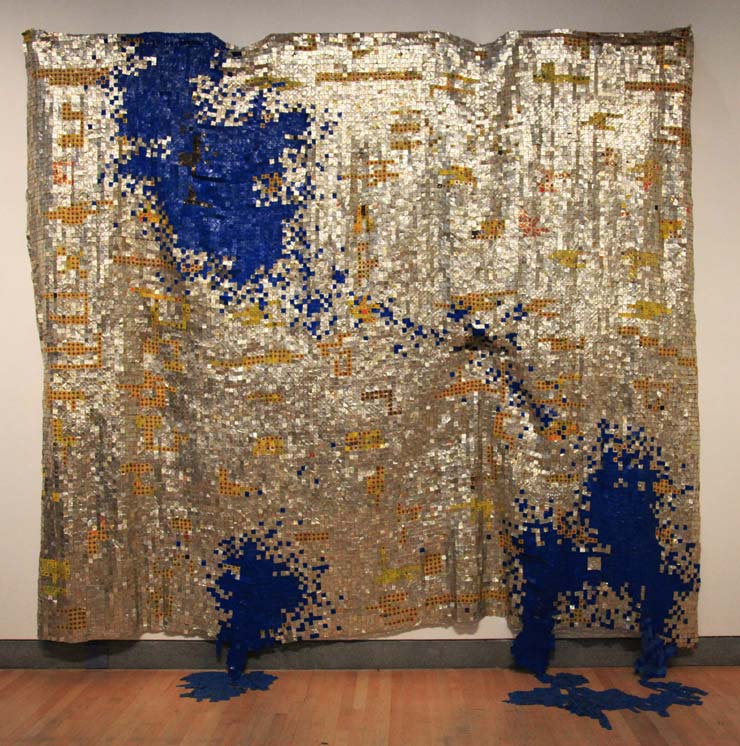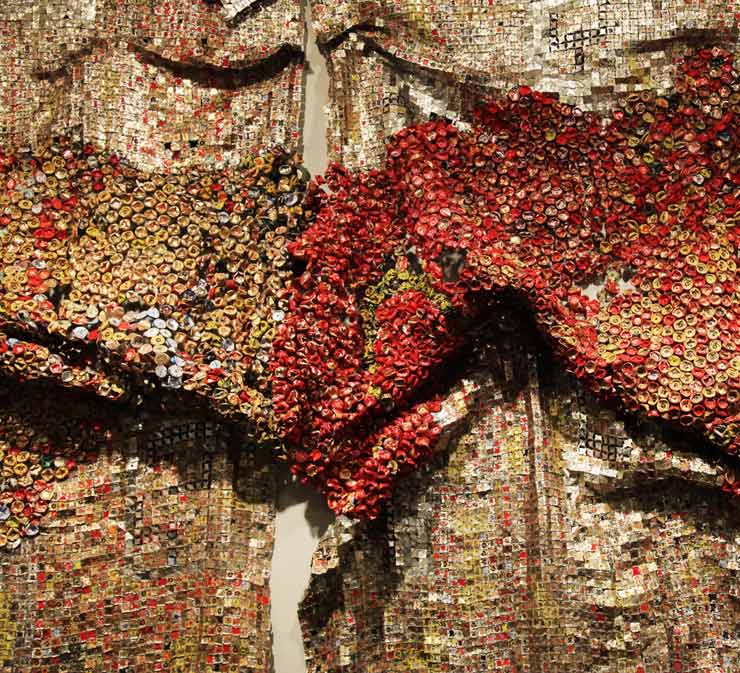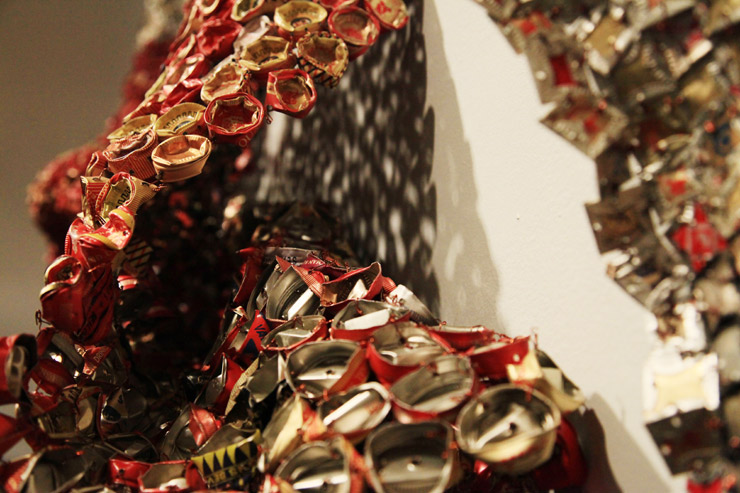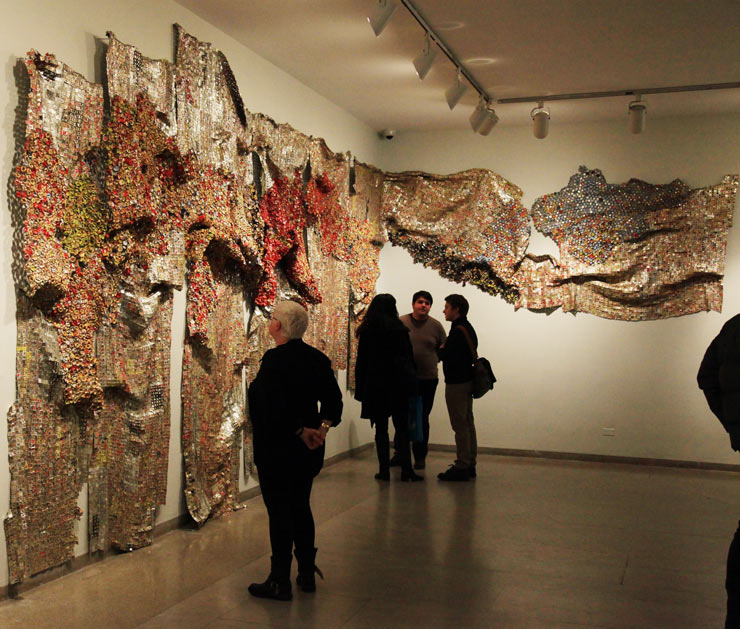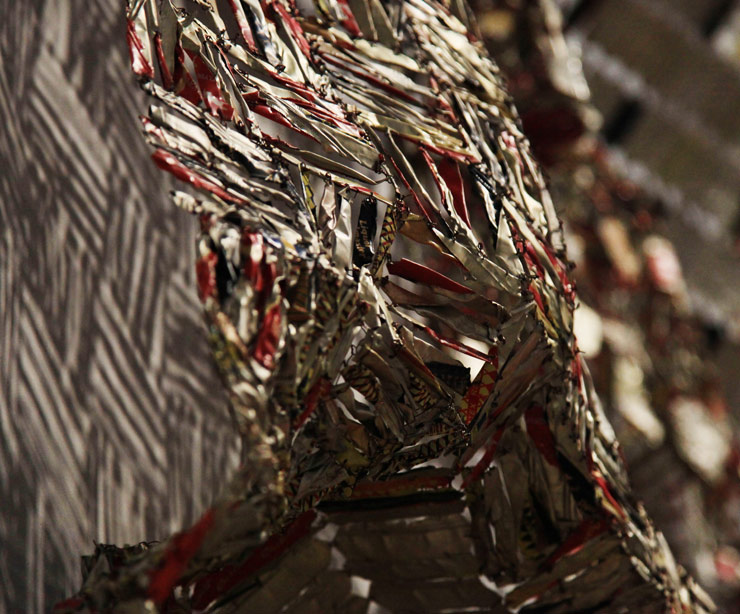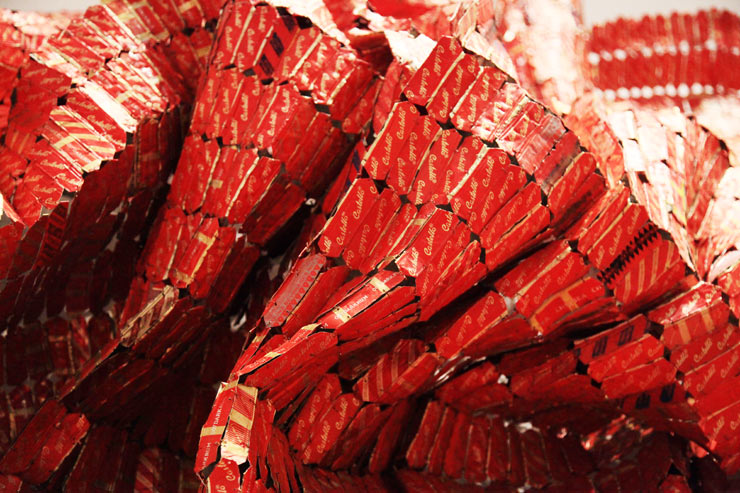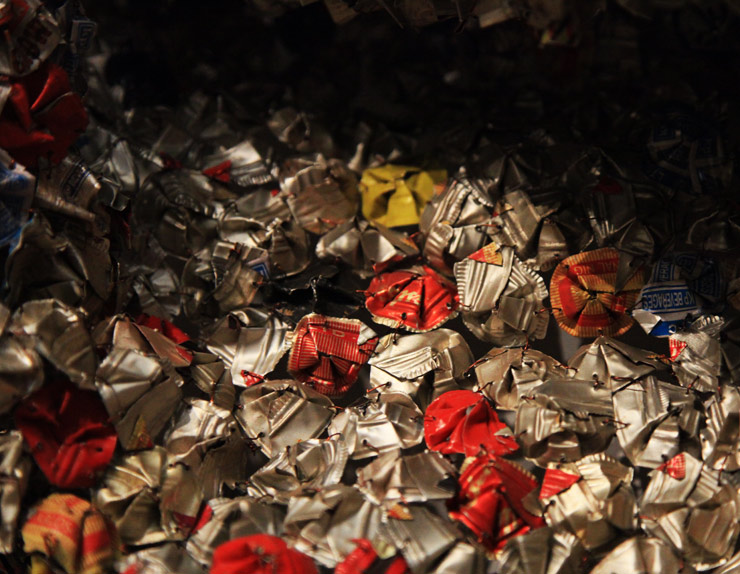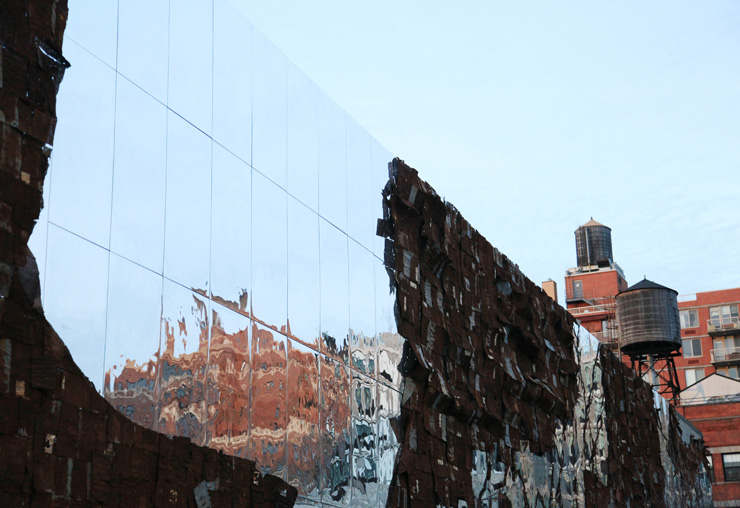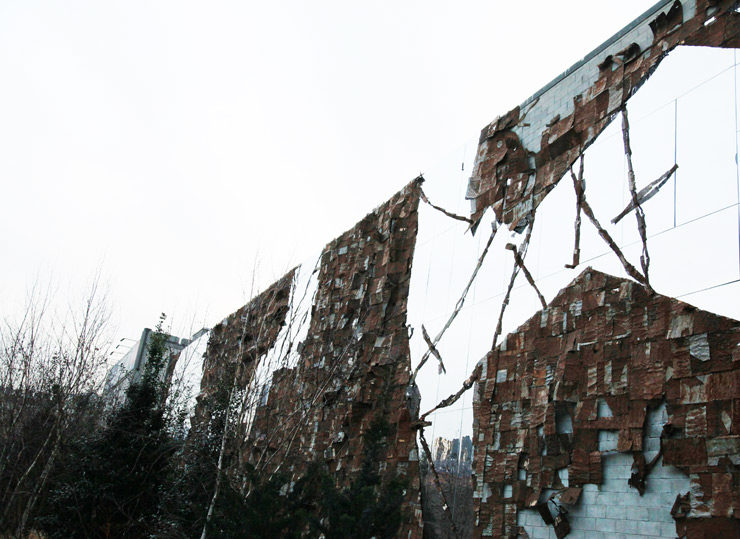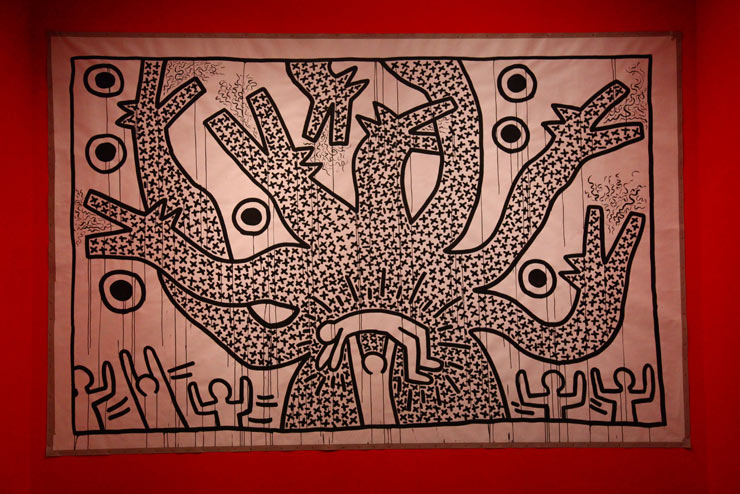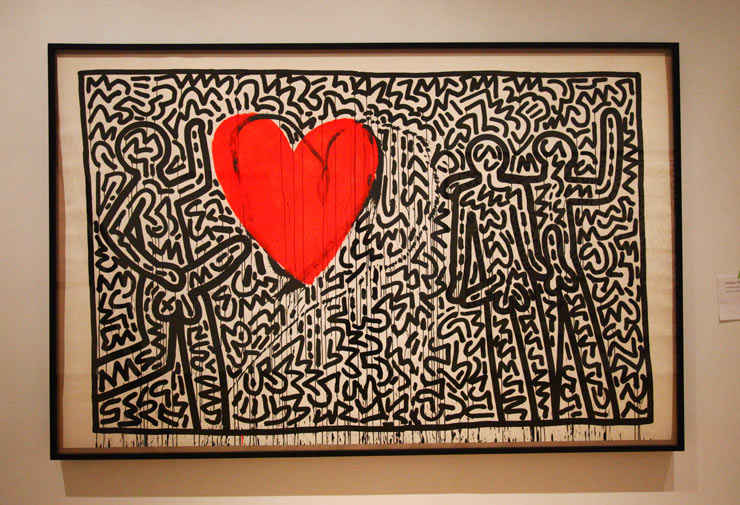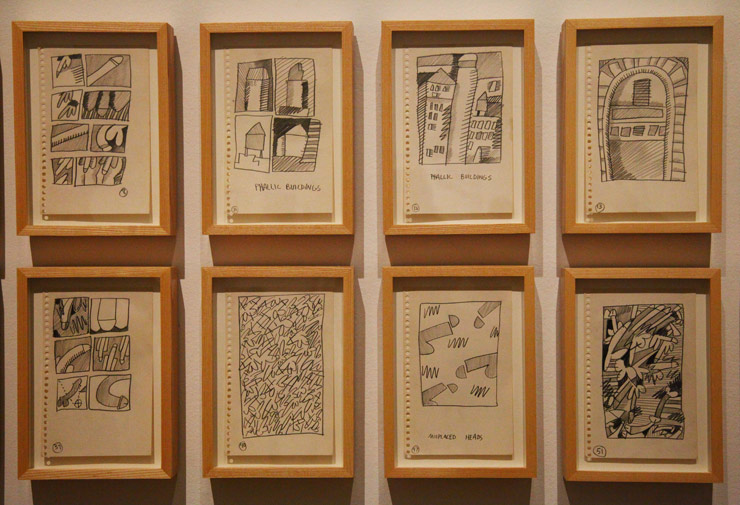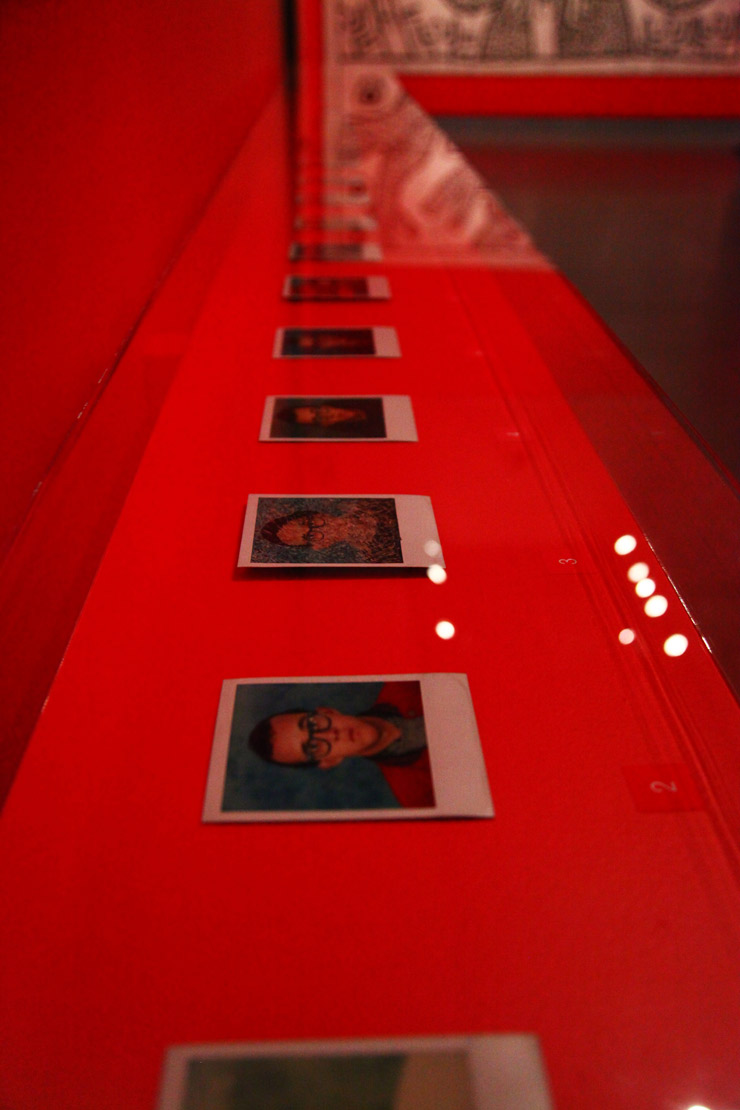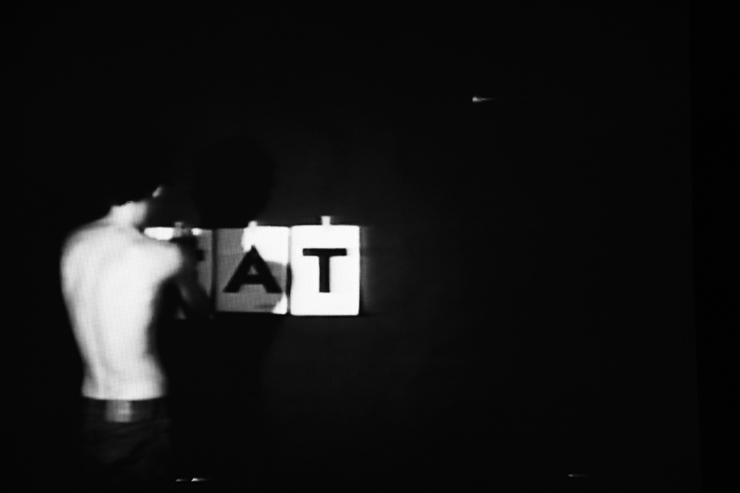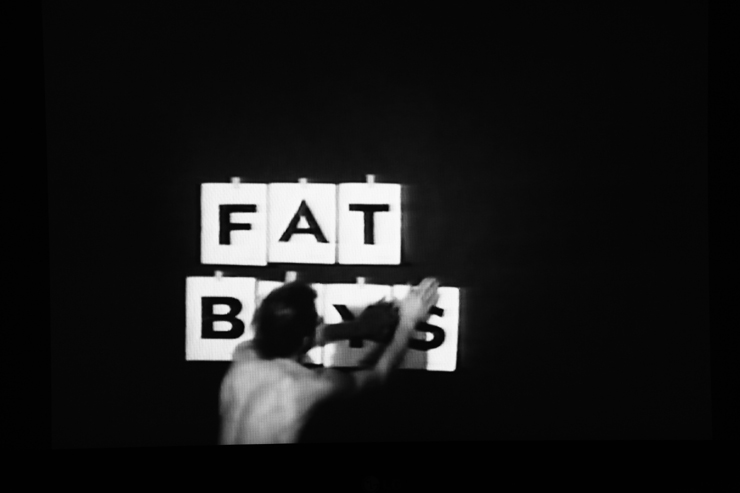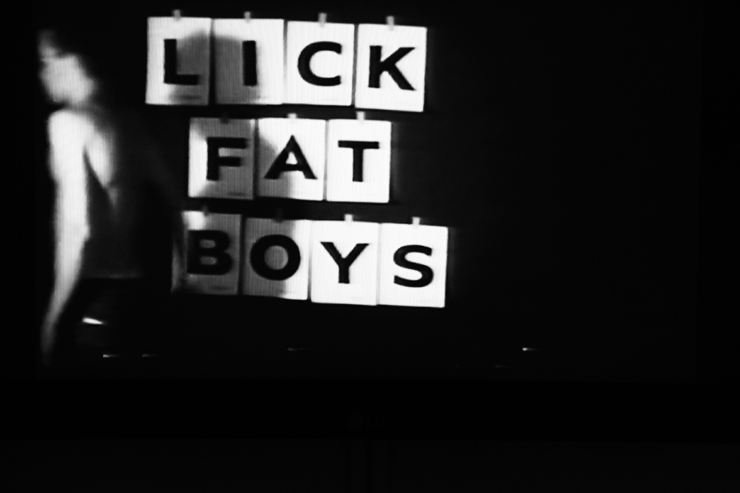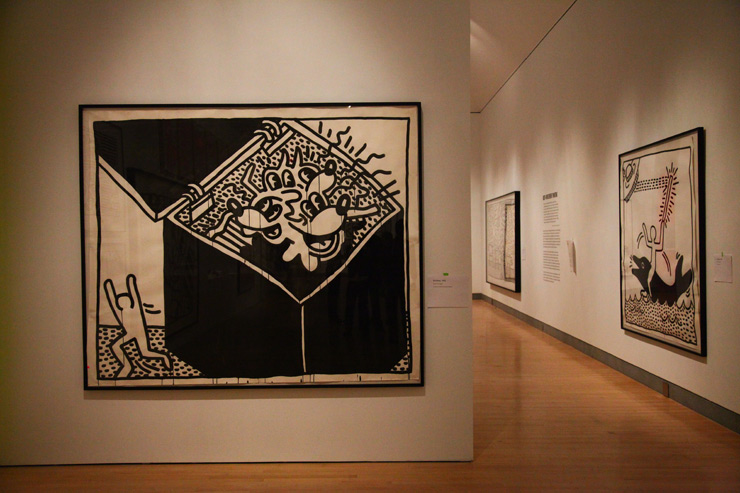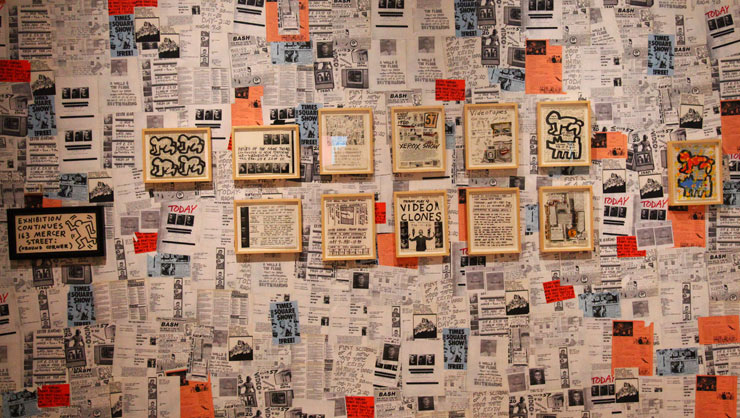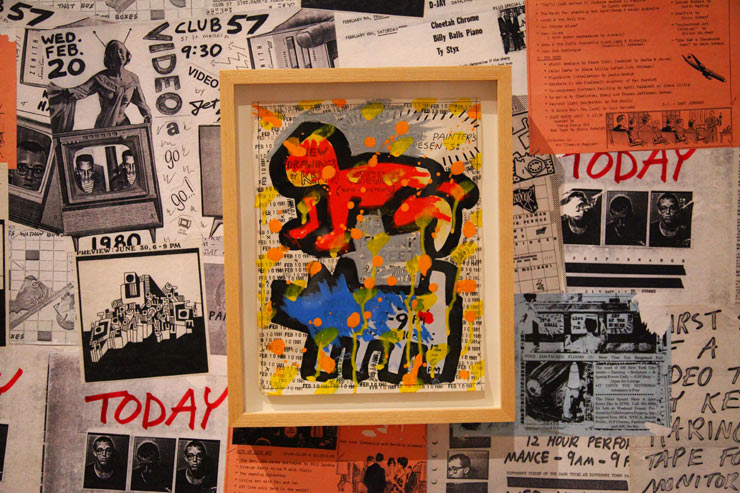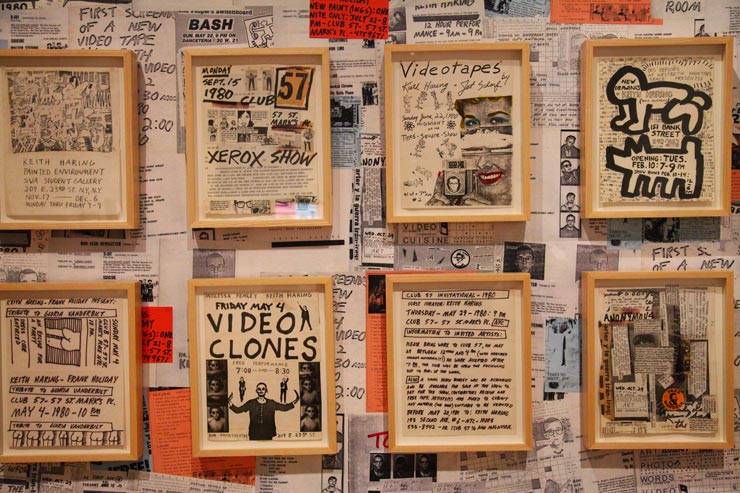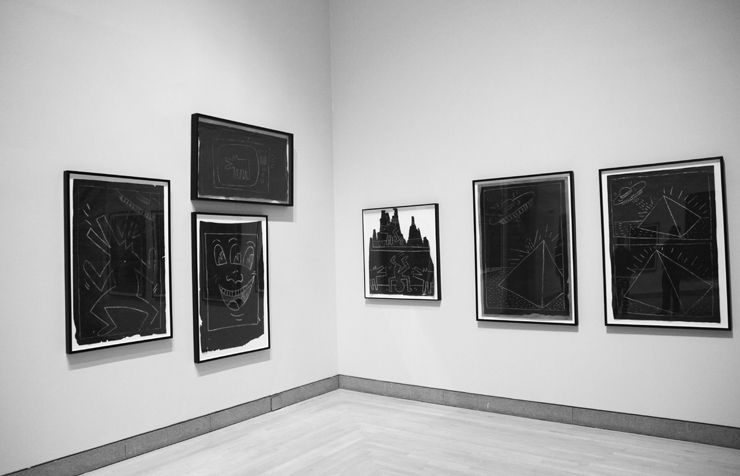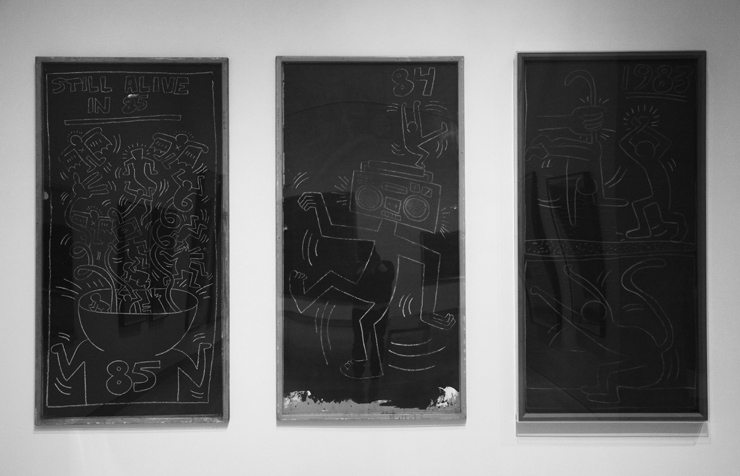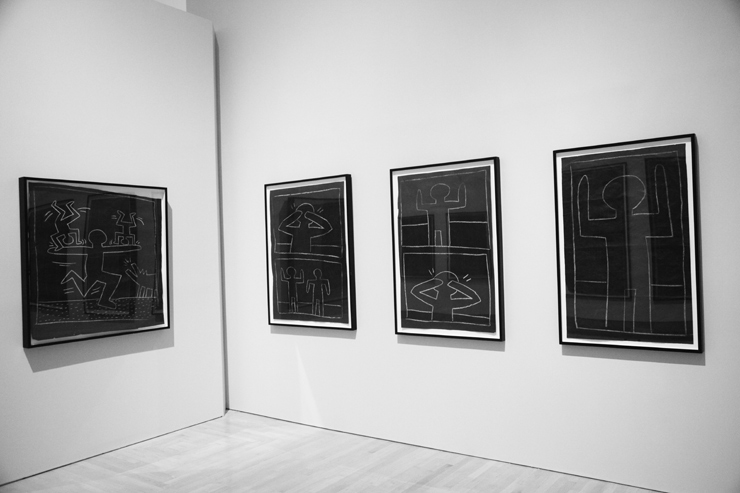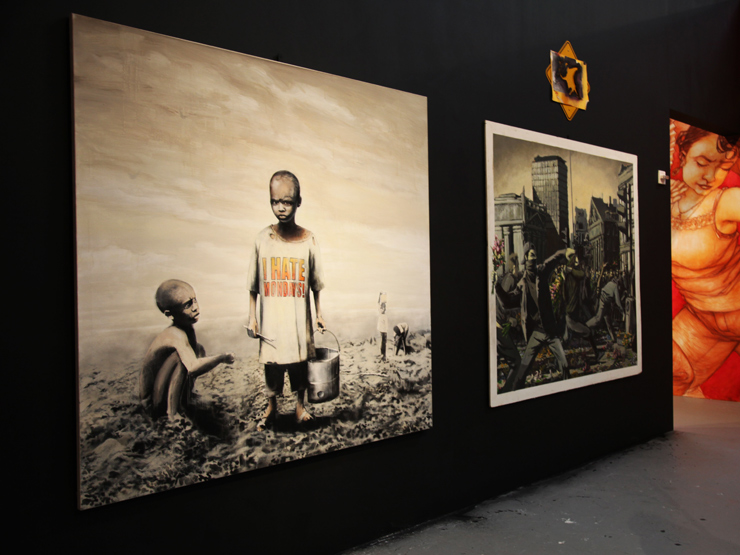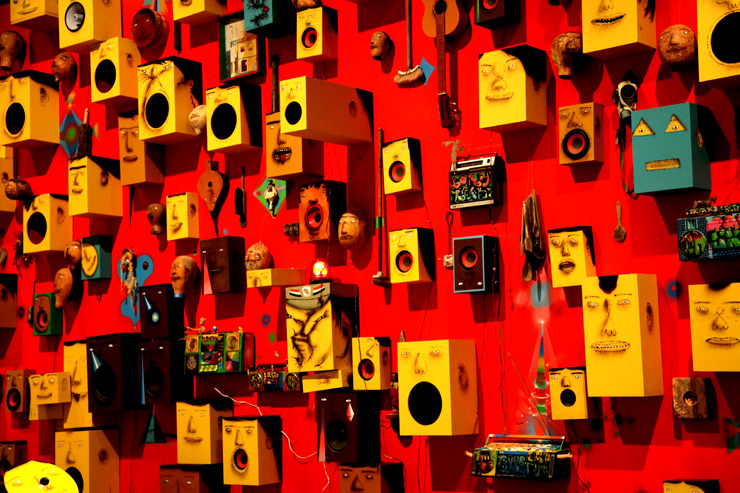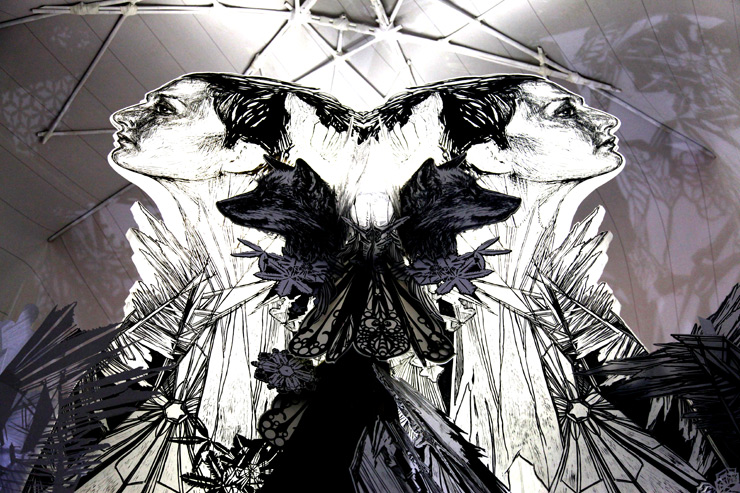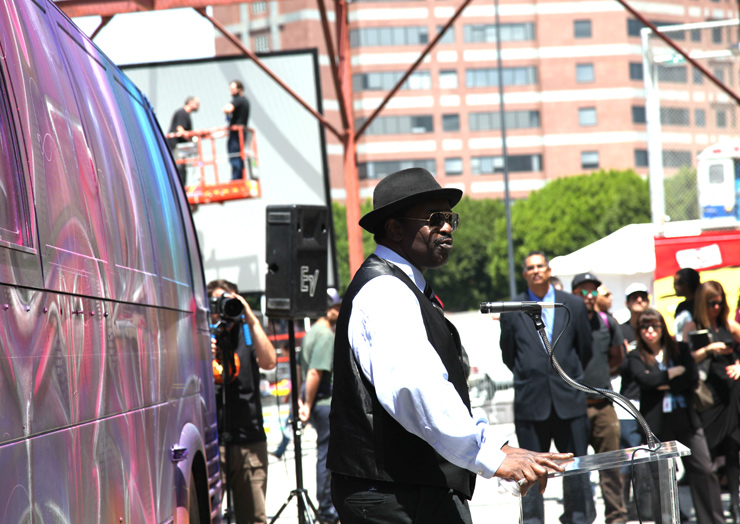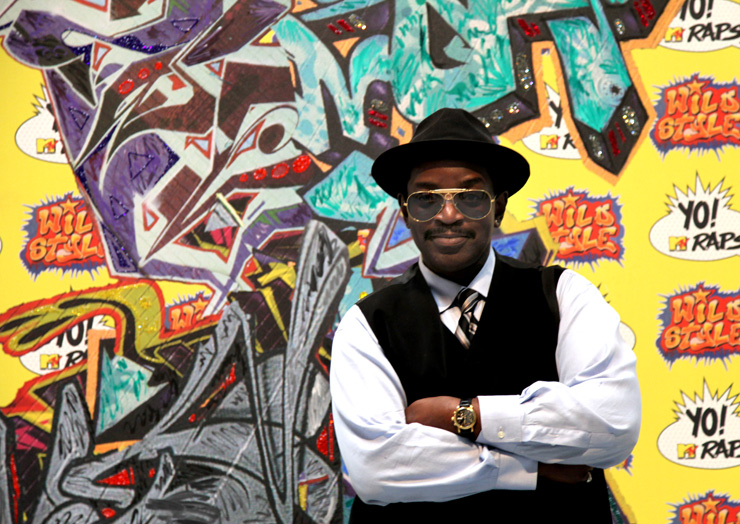Six years ago these boats of salvaged materials were floating down the Hudson, teaming with twenty-something sea-worthy souls and bohemian performers in costume aiming for the dock at Deitch Studios. This week they are beached up against the base of a massive seven story soft sculpture tree for the opening of Swoon: Submerged Motherlands at the Brooklyn Museum. In between these events each vessel has travelled down the Mississippi River and also crossed the Adriatic Sea from Slovenia to ceremoniously crash the Venice Biennale.
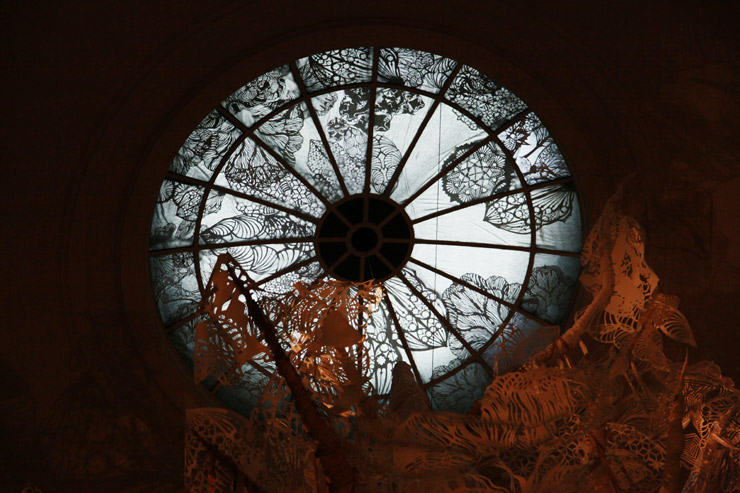
The view of the top at “Swoon: Submerged Motherlands” Detail. (photo © Jaime Rojo)
Newly arrived through U.S. Customs on New York shores from Italy, the seaworthy works of art have returned “home” to Brooklyn as Swoon, the Florida native who came to New York as an art school student, has called it for seventeen years. A singular Street Artist who once wheat-pasted her hand cut portraits anonymously in hidden city doorways, she is also known for her fervently collaborative projects that have carried her to galleries, museums and socially-rooted arts activism in places like Kenya, Haiti, London, Oaxaca, New Orleans, Miami, Braddock (Pennsylvania), Boston, San Francisco and Los Angeles.
No matter where Caledonia Dance Curry goes, there is usually a cadre of handsome and delightful crafters and co-creators in tow; talented friends and valued confidants who help bring her ideas and vision to fruition. While she is clearly at the helm, this dynamic exceeds the typical artist and her studio paradigm; hers is rooted in a regard for collaboration, community, experimentation, and discovery. Oh, and a bit of theater.
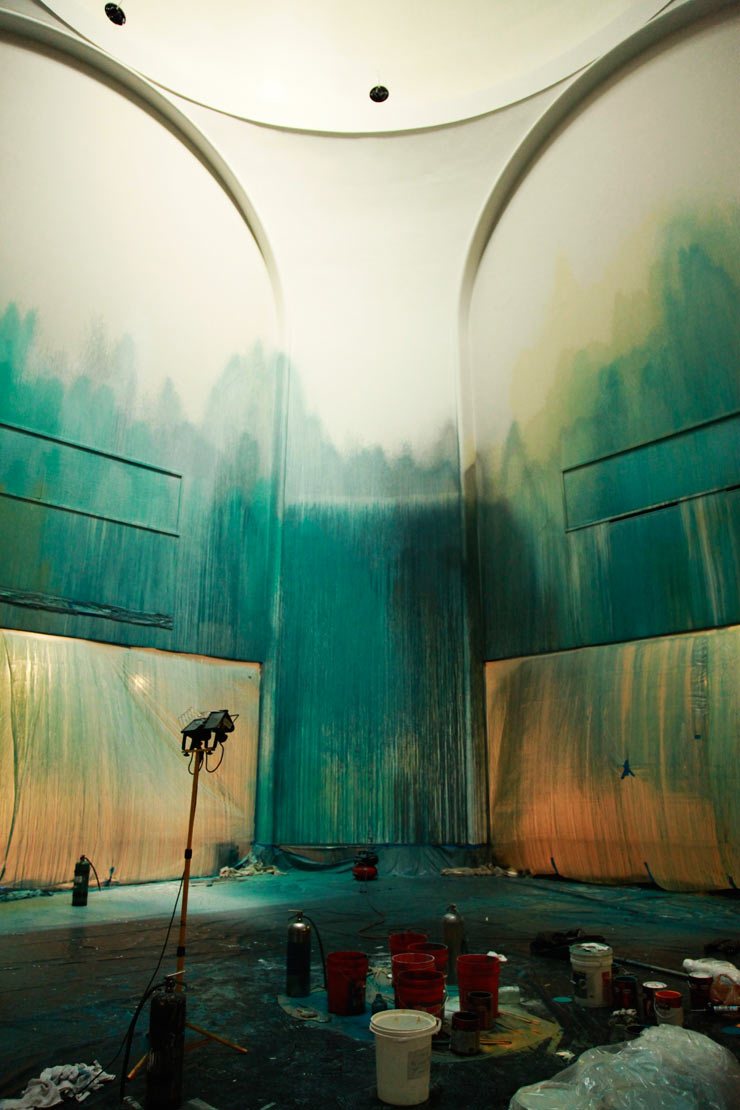
Fire extinguishers in the foreground and rear during the multi-layered preparation of the exhibition for “Swoon: Submerged Motherlands” Process shot. (photo © Jaime Rojo)
“We are pouring so much into this show and for me I think part of the reason I’m willing to do it is because it is my home. The museum has been awesome and they have given me as much as they can and I have just thrown everything at it because I’m like ‘I’m home, this is my place.’ For me this show is different from installations I have done in other museums and other places,” Swoon explains.
Managing Curator of Exhibitions at the museum, Sharon Matt Atkins, talks about the command of the space and its transformational effect. “Swoon did not hold back in fully utilizing our grand rotunda gallery. She has been working for three and a half weeks at the museum with a large team to get the installation ready. Much of the work involved assembling parts made in the studio, but then bringing it all together with the finishing details onsite,” she says.
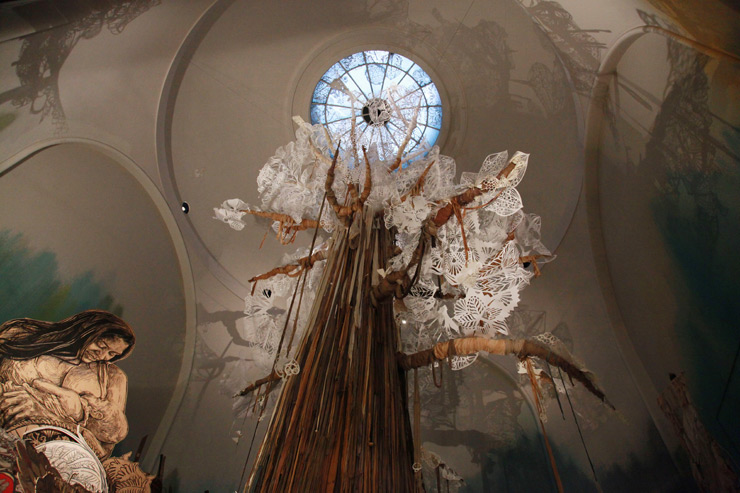
“Swoon: Submerged Motherlands” Detail of the top of the tree. (photo © Jaime Rojo)
“Sharon brought me in here and said, “What is interesting to you in the building?” and I really love that because the thing about working on the street is that you are always thinking site-specifically. And so that thinking has to translate into your work in all places. For me if I make something in a museum I want it to be very site-specific and this is probably one of the most site-specific pieces I’ve ever done,” explains Swoon.
Under the advice and guidance of an engineer, the artist also modified her design process to allow for foundational considerations like truss sections and lift points. “I showed him an initial model and he showed me an engineered system and then I built another model based on the system that he engineered.”
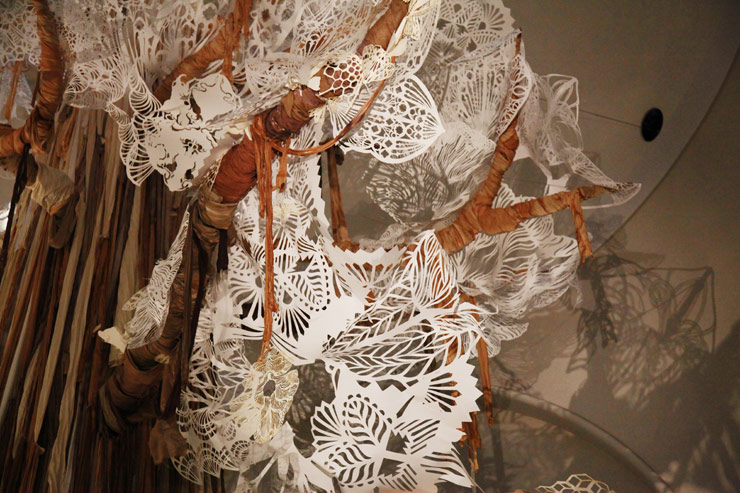
“Swoon: Submerged Motherlands” Detail. (photo © Jaime Rojo)
It is probably unusual for a grand museum to be so amenable to the requests of an artist for a site specific piece that literally inhabits the furthest reaches of a space, and Swoon says she recognizes the leeway she received. “You know, they have been really adventurous in letting us create this. We’ve been sort of pushing a lot with the creation of this piece.”
For Matt Atkins, the opportunity to bring an internationally known street artist and neighbor into the museum has been the result of just over two years of planning. “It’s been so wonderful working with Swoon to realize her vision for this project. This is the first time we’ve really used the full height of the 72-foot dome, so it’s quite spectacular. I am thrilled to see her boats back in New York and for them to have this new life. The underlying ideas about climate change in the installation also make this project an appropriate tie in to the Museum’s focus on activism with our other exhibitions and collections,” she says.
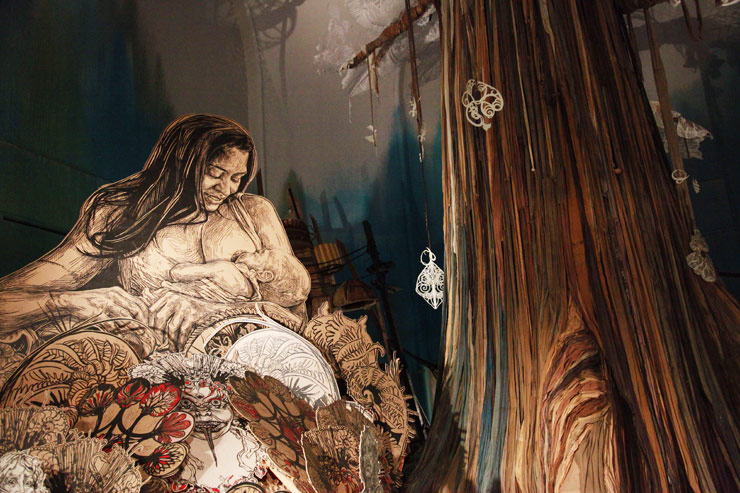
“Swoon: Submerged Motherlands” Detail. (photo © Jaime Rojo)
Guests who walk into the Iris and B. Gerald Cantor Gallery on the fifth floor will need to crane their gaze upward to see the full expanse of the tree that reaches to the cupola, now embroidered across the sky’s light with her lace patterning. Softly gnarled limbs are clustered with outsized and filigreed leaves that cast shadows on the maritime layers of sprayed blue washes streaming to the floor.
Looking up at the multi-textured and tinted bark that skillfully, if playfully, emulates the trunk of a tree, Swoon talks about the demands of production. “We worked it all out in the studio and then we just spent weeks tearing and shredding and dying the fabric, cutting out paper leaves, and building up these kind of “roots”, crocheting pieces, putting dyed fabric on them, sewing sleeves for the rings to put dyed fabric on – It’s just been immense! It’s one of those things where I’ve never built something on this scale so I really don’t realize how much energy it absorbs when it is that size.”
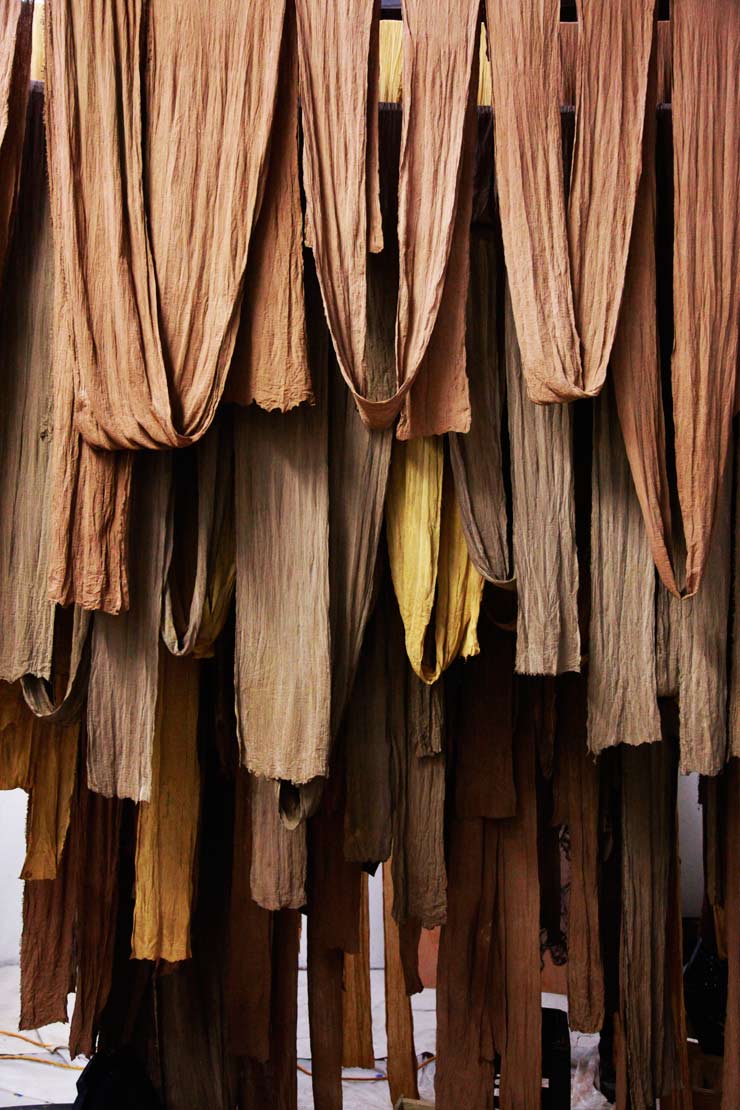
“Swoon: Submerged Motherlands” The fabrics used to build the bark of the tree trunk were custom dyed and are shown here at the studio drying. (photo © Jaime Rojo)
To contemplate the rotunda installation and the finer details of the rough rafts Swoon provides an equally festooned gazebo to rest on and nearby linotype images of caretaking and motherhood to see — including a more recent portrait of the artists’ own mother that has also been spotted wheat-pasted in the street.
“So I’ve been thinking a lot about ‘home’ and this installation is about home and the loss of home in a lot of ways. When I decided on ‘Submerged Motherlands’ I was thinking about climate change and thinking about “Sandy”. Also my own mother passed away while I was in the ideation stage for the installation so I was thinking about the loss of my own mother and that relationship and it all just kind of merged together,” she says.
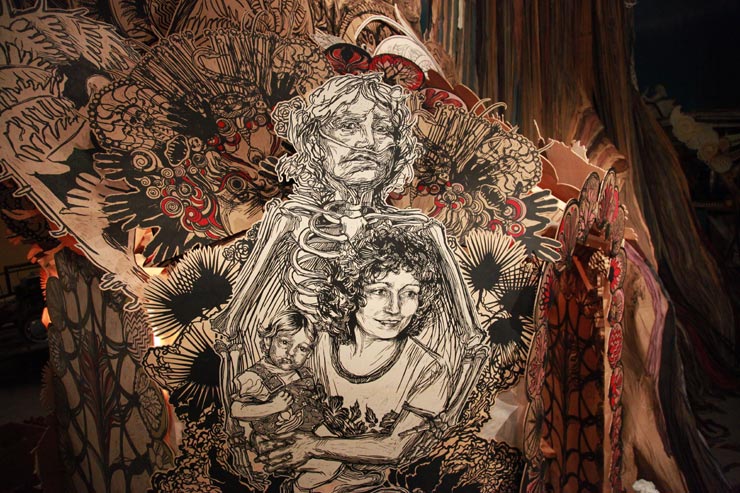
“Swoon: Submerged Motherlands” Detail of the bottom part of the gazebo. (photo © Jaime Rojo)
Brooklyn Street Art: When you speak of your mother passing during the ideation and the title of the show I look at your work and I think of it as a kind of maternal act, of caretaking, of providing shelter. I wonder if there is any relationship between this concept of motherhood and caretaking that feels true to you.
Swoon: I guess the thing that I think of is almost an impulse to build a safe space in the world for myself and my community; some place to be a little bit different from the norm. Then also that same impulse kind of extended outward to projects like working in Haiti after the earthquake and trying to create literal shelter.
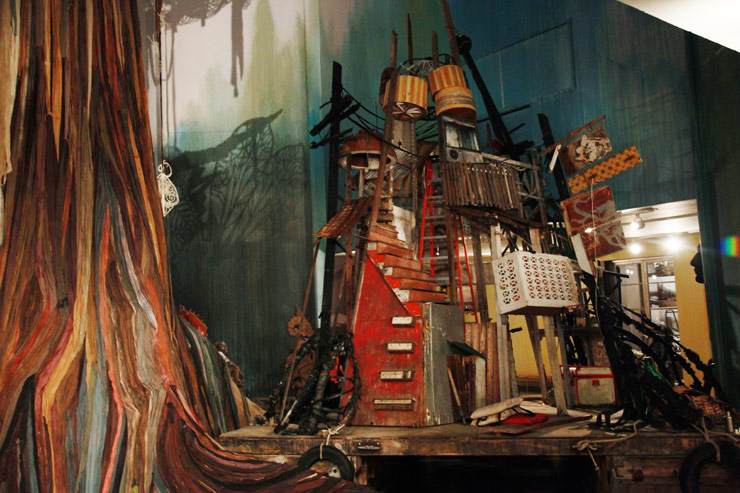
“Swoon: Submerged Motherlands” Detail. (photo © Jaime Rojo)
Brooklyn Street Art: Thinking about site-specificity and its importance in your work, many of your installations on the street are in the unpolished, eroded areas of town. Contrast that with a museum environment like this where everything is clean and crisp – it occurred to me that you created that same unpolished environment by taking the fire extinguishers and blasting them across the walls.
Swoon: Oh my god the funnest tool ever!
Brooklyn Street Art: Have you used fire extinguishers before?
Swoon: You know what? I never have. Honestly it was just one of those things where I was just like, “How do I get a lot of paint up quickly?” – and I just thought about the fire extinguishers. I mean people use those – it is such an amazing tool. Big props to Craig (Costello), to Krink, who is such a pioneer with that. I never had used it before. I usually take care not to simulate the street environment but maybe that kind of just happened.
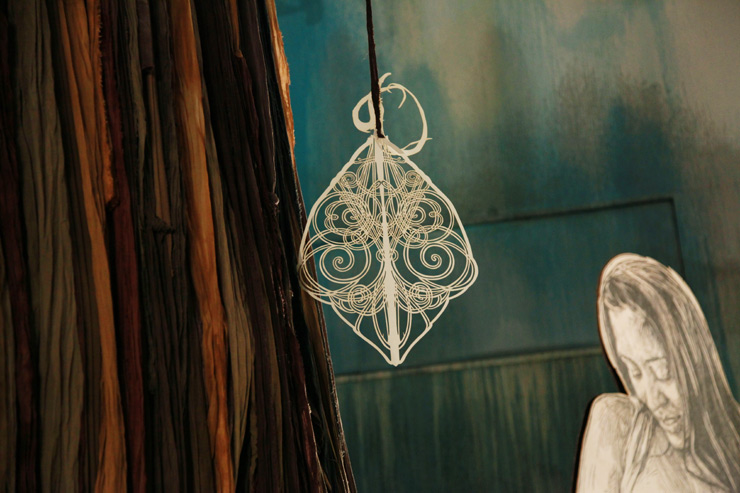
“Swoon: Submerged Motherlands” Detail. (photo © Jaime Rojo)
Brooklyn Street Art: And when it comes to your work and this installation, you don’t like to talk about metaphors.
Swoon: Well, its not that I don’t want to talk about them – its that I think you can get too literal. I think that part of the strength of the arts is that you try to leave a little openness for the parts of our minds that are a little bit less rational and that don’t have this strict linear codex of how you interpret something. Like in the way that the Motherlands theme has so many different kinds of interpretations and layering – I think it is important to keep that kind of richness.
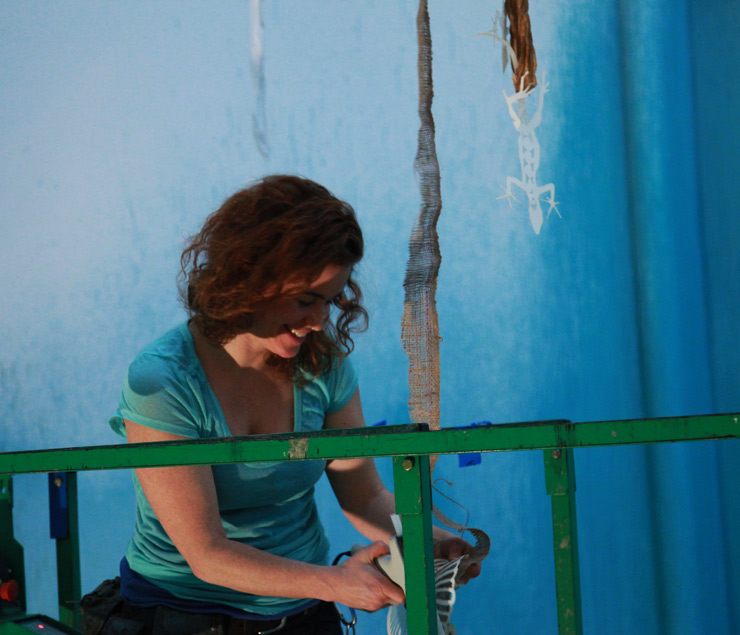
The artist Swoon at work on the installation. “Swoon: Submerged Motherlands” (photo © Jaime Rojo)
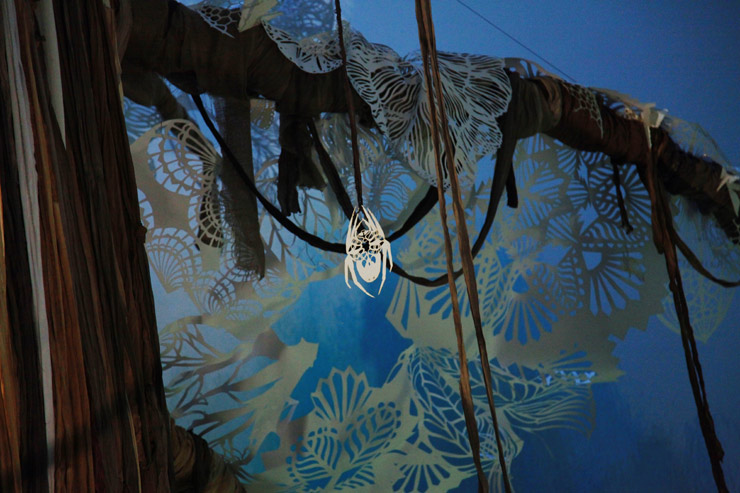
“Swoon: Submerged Motherlands” Detail. (photo © Jaime Rojo)
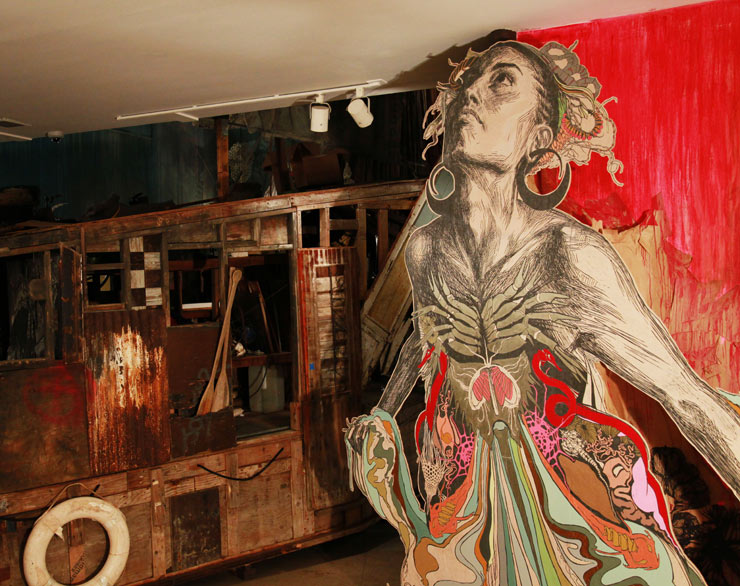
“Swoon: Submerged Motherlands” Process shot. (photo © Jaime Rojo)
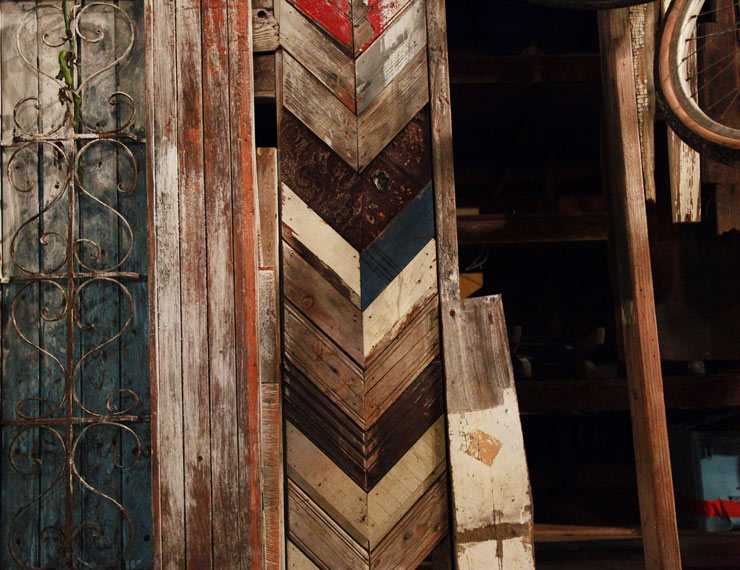
“Swoon: Submerged Motherlands” Detail of one of the boats. (photo © Jaime Rojo)
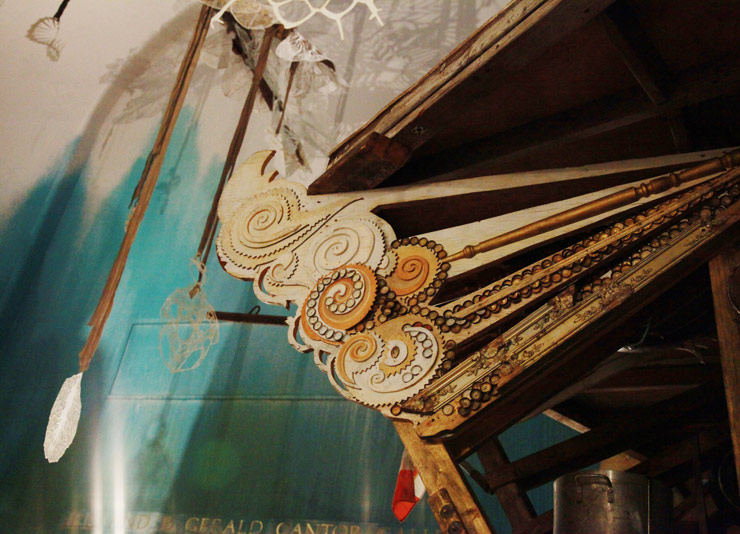
“Swoon: Submerged Motherlands” Detail of one of the boats. (photo © Jaime Rojo)
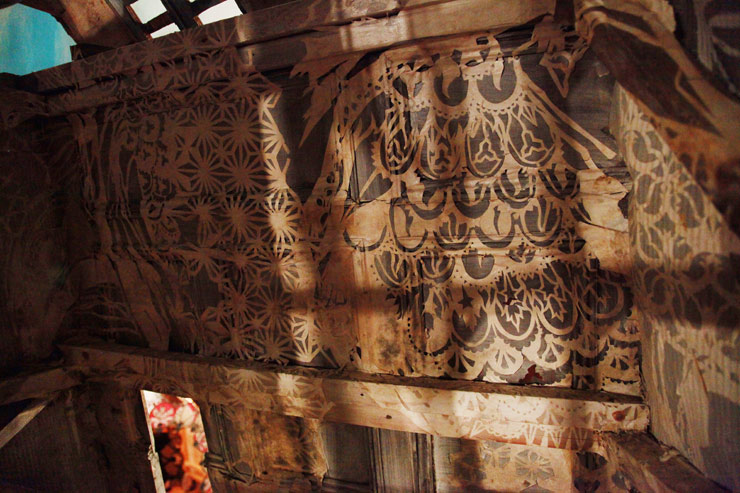
“Swoon: Submerged Motherlands” Detail shot of the interior wall of one of the boats. (photo © Jaime Rojo)
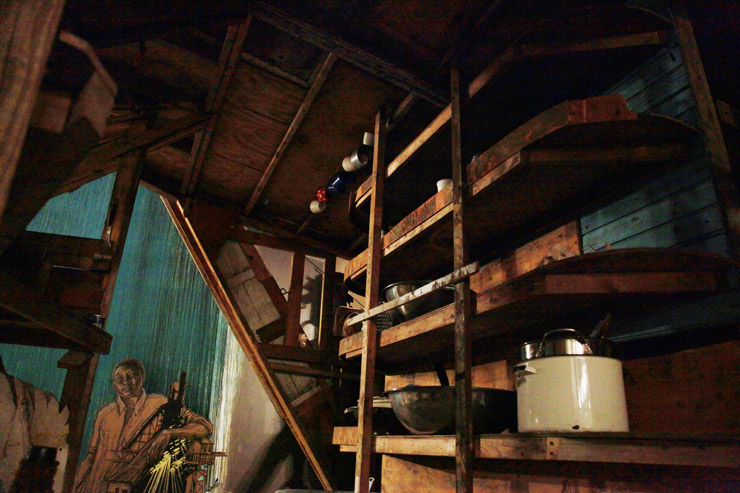
“Swoon: Submerged Motherlands” View through one of the boats. (photo © Jaime Rojo)
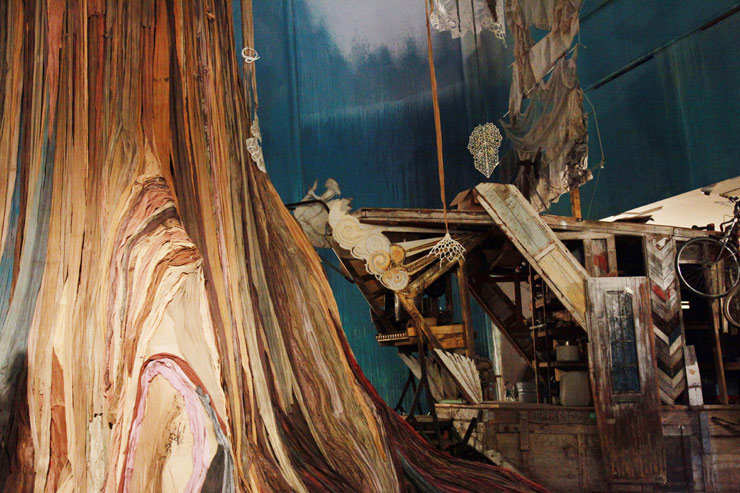
“Swoon: Submerged Motherlands” Process shot. (photo © Jaime Rojo)
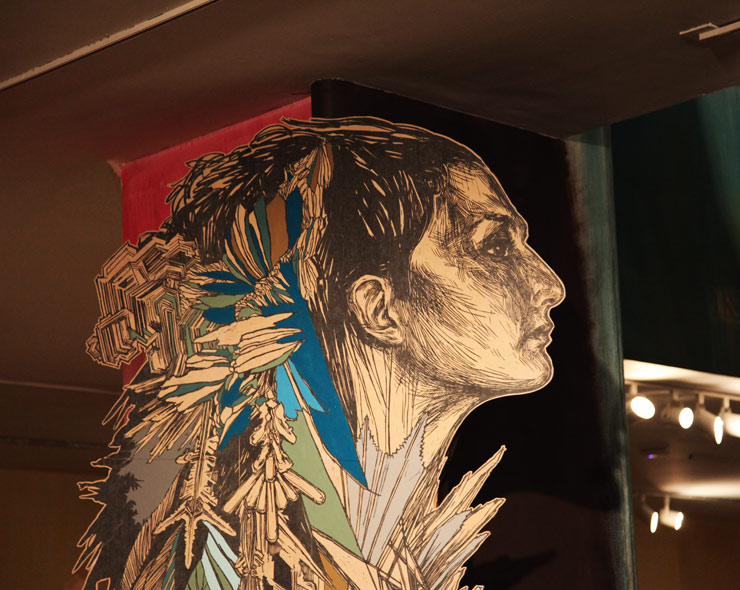
“Swoon: Submerged Motherlands” Detail. (photo © Jaime Rojo)
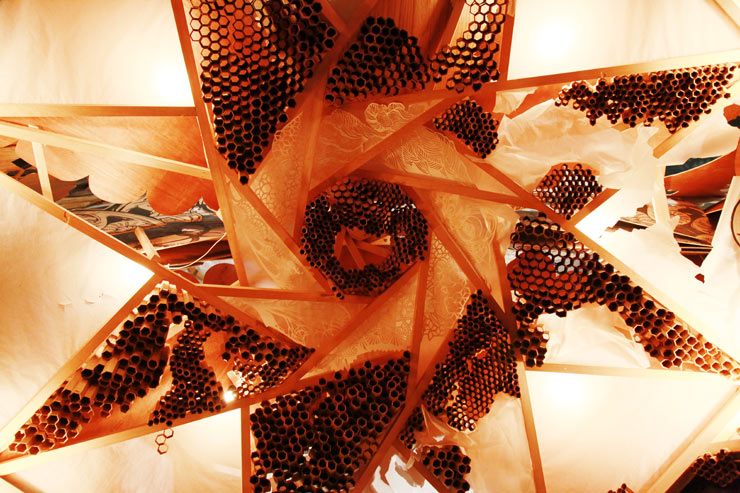
“Swoon: Submerged Motherlands” Detail of the gazebo ceiling. (photo © Jaime Rojo)
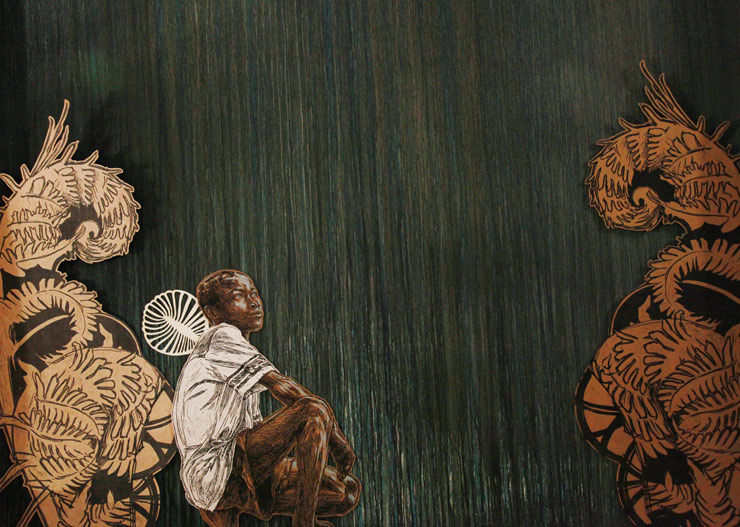
“Swoon: Submerged Motherlands” Process shot. (photo © Jaime Rojo)
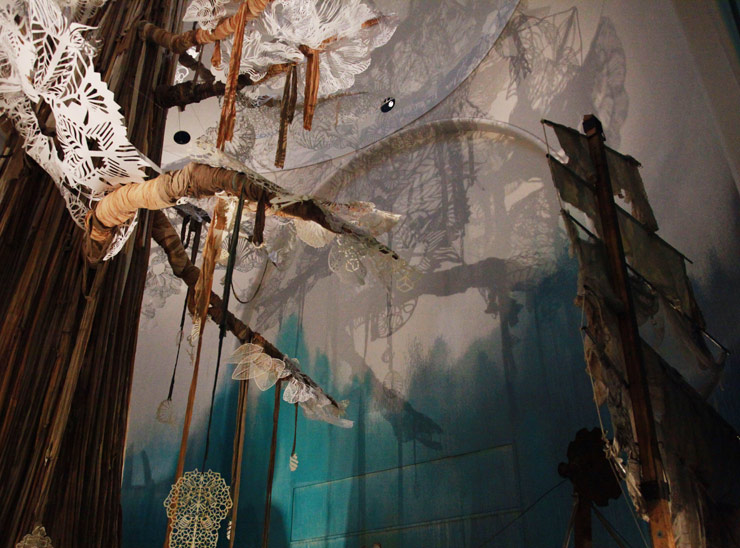
“Swoon: Submerged Motherlands” Detail. (photo © Jaime Rojo)
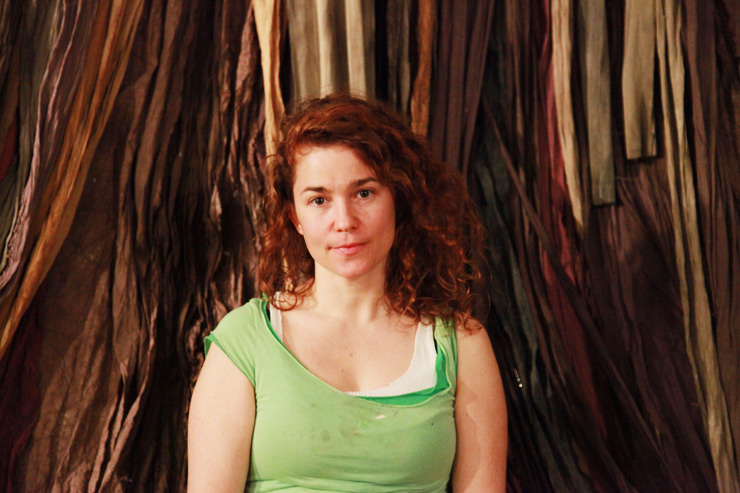
A portrait of the artist at the base of the tree for “Swoon: Submerged Motherlands” (photo © Jaime Rojo)
Swoon: Submerged Motherlands runs April 11–August 24, 2014 at The Brooklyn Museum. For more information visit the museum website HERE.
Join BSA and Swoon on April 24th
In Conversation: Brooklyn Street Art
Thursday, April 24, 2014 at 7 p.m.
Iris and B. Gerald Cantor Auditorium, 3rd Floor
For more information go HERE.
<<>>><><<>BSA<<>>><<<>><><BSA<<>>><><<>BSA<<>>><<<>><><BSA
Please note: All content including images and text are © BrooklynStreetArt.com, unless otherwise noted. We like sharing BSA content for non-commercial purposes as long as you credit the photographer(s) and BSA, include a link to the original article URL and do not remove the photographer’s name from the .jpg file. Otherwise, please refrain from re-posting. Thanks!
<<>>><><<>BSA<<>>><<<>><><BSA<<>>><><<>BSA<<>>><<<>><><BSA
This article was also published on The Huffington Post
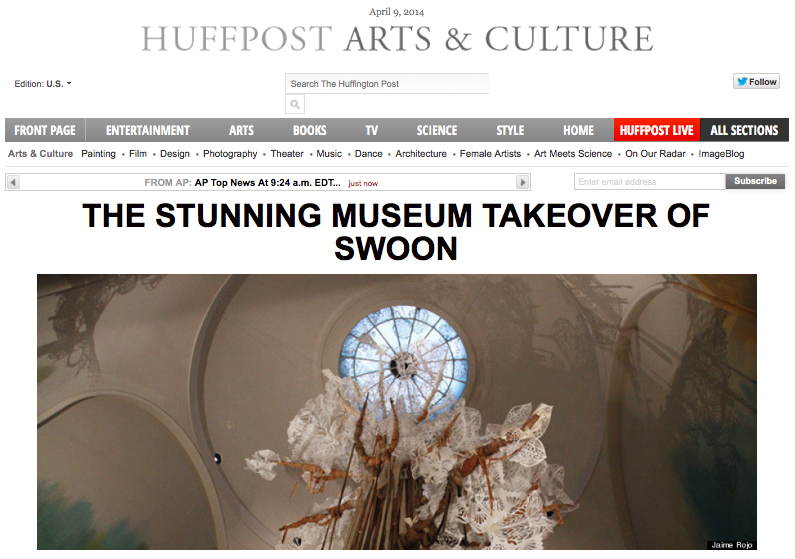
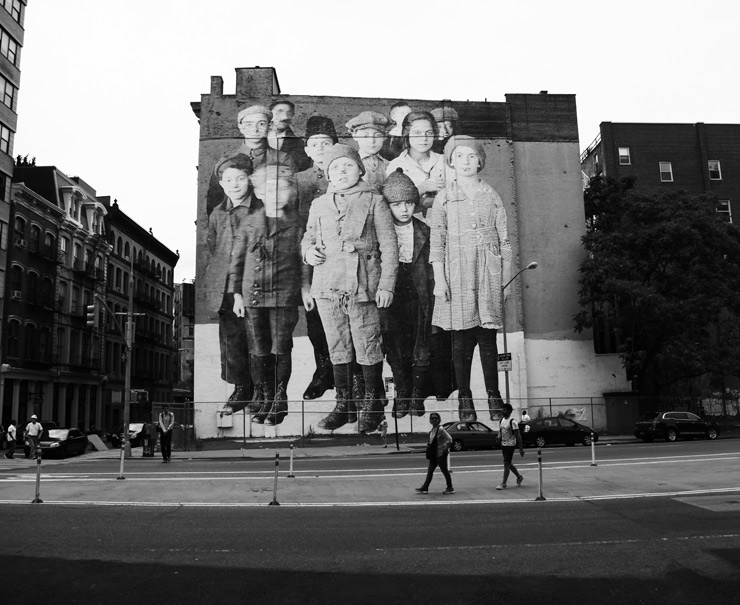
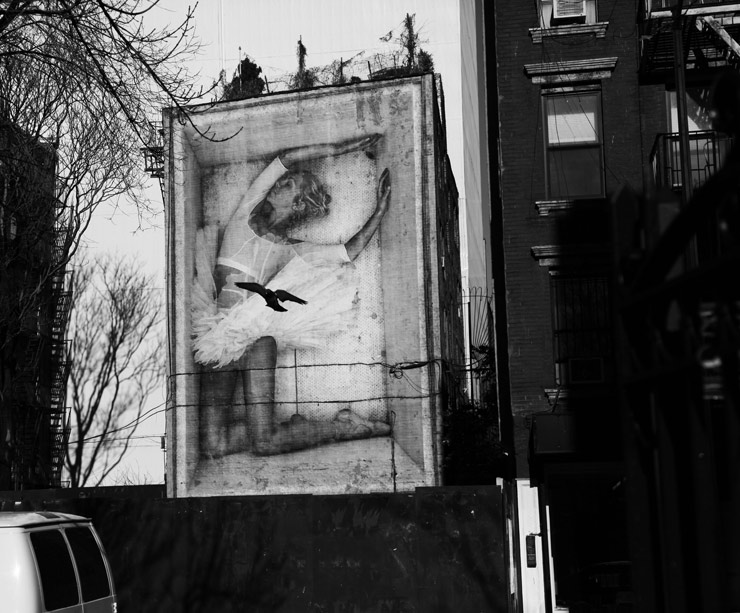
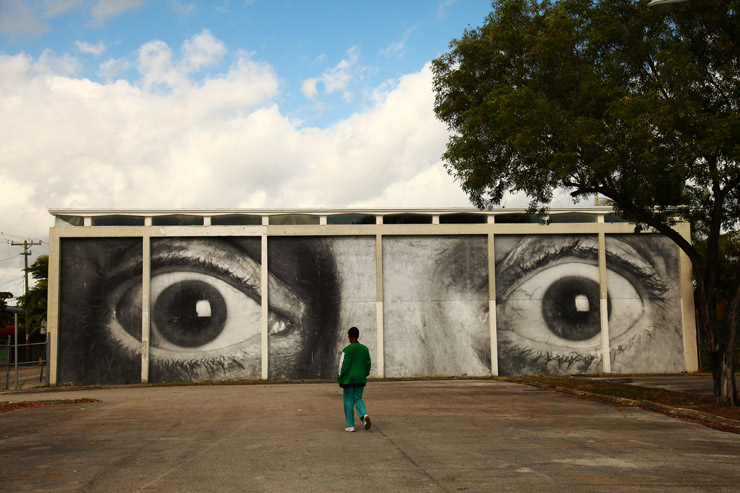
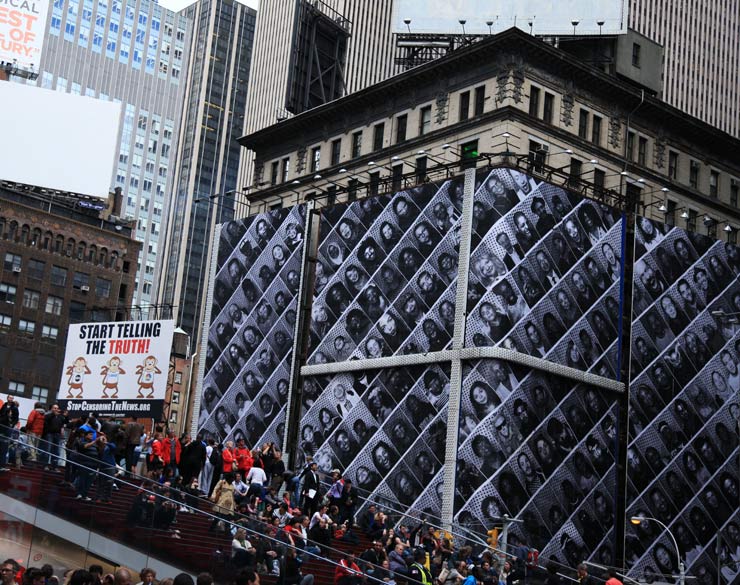
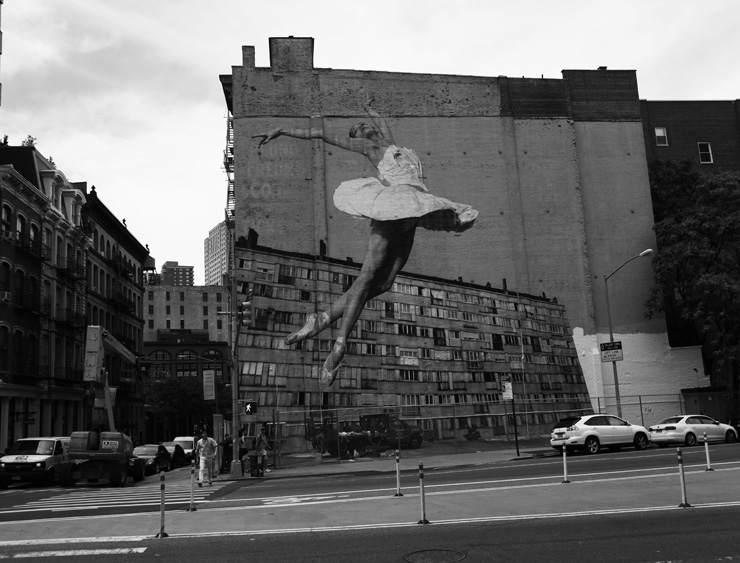
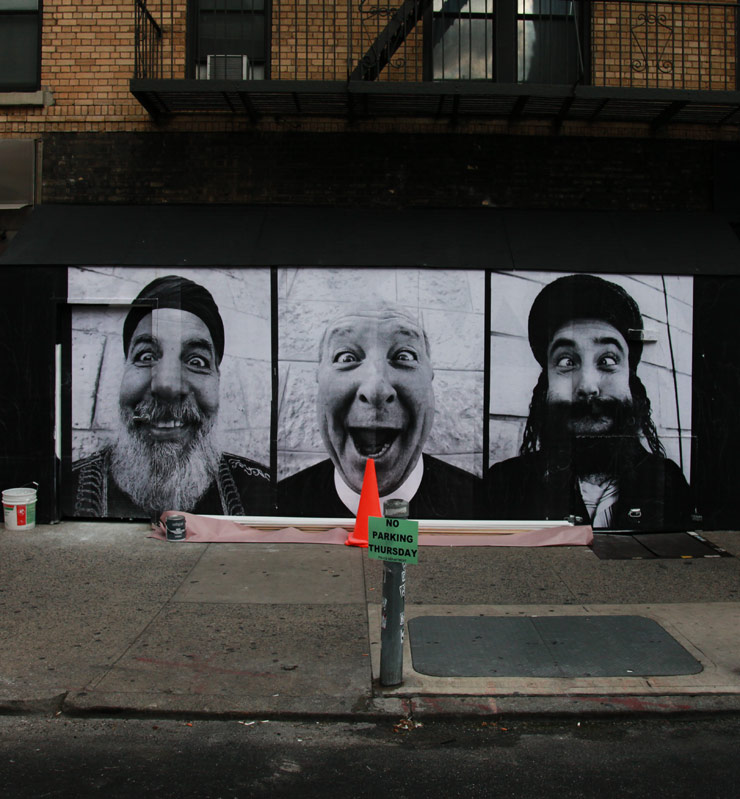
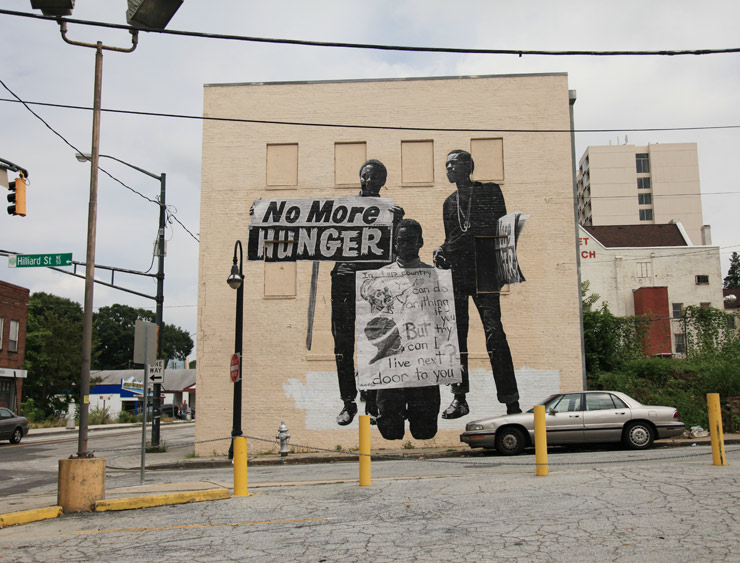
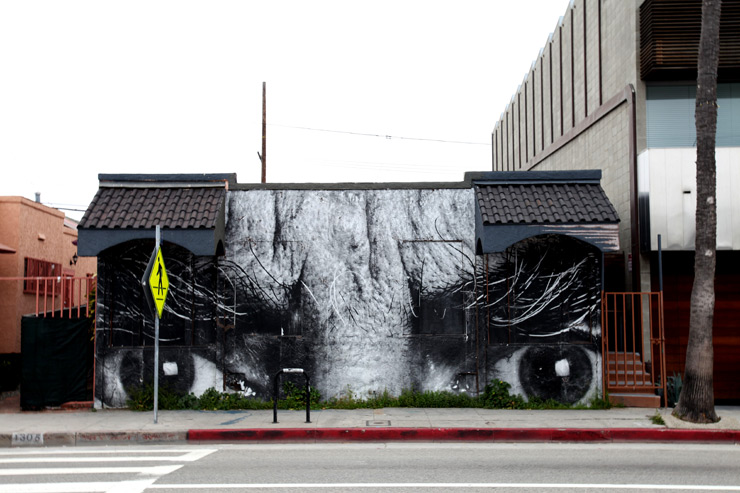

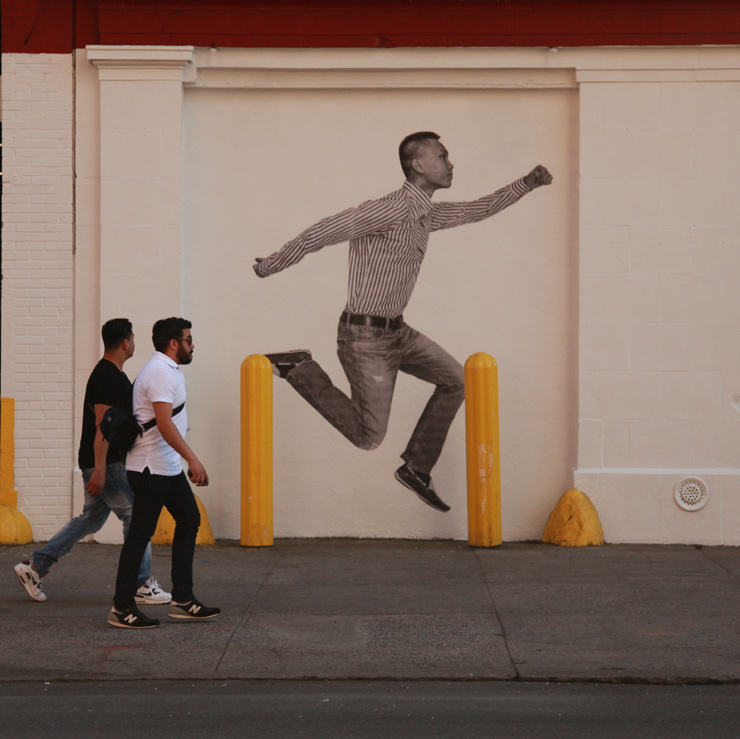
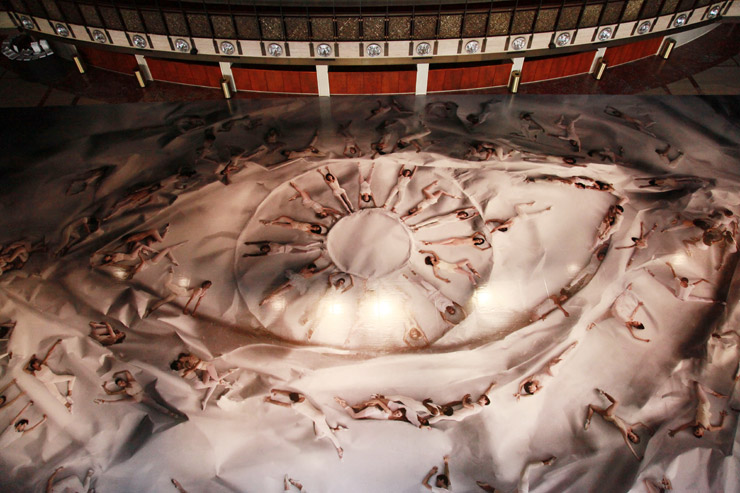
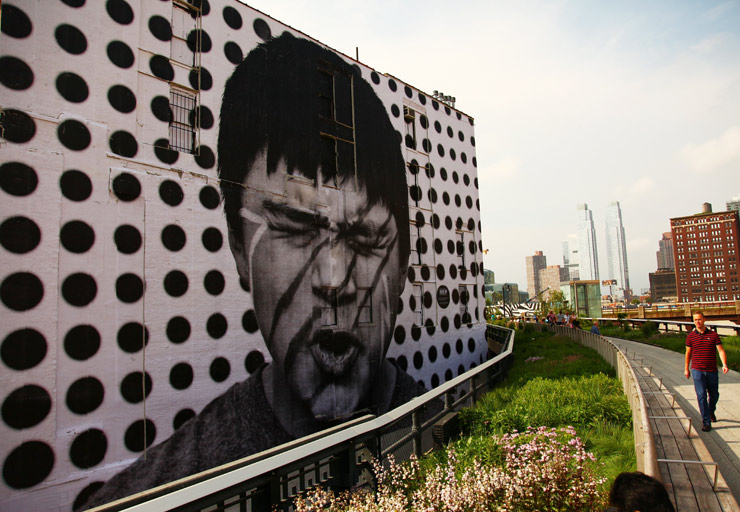
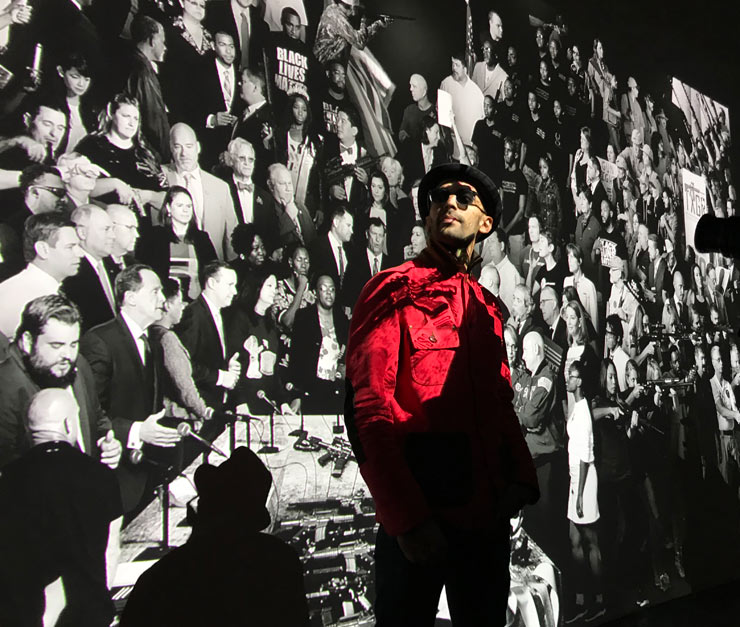
 BROOKLYN STREET ART LOVES YOU MORE EVERY DAY
BROOKLYN STREET ART LOVES YOU MORE EVERY DAY